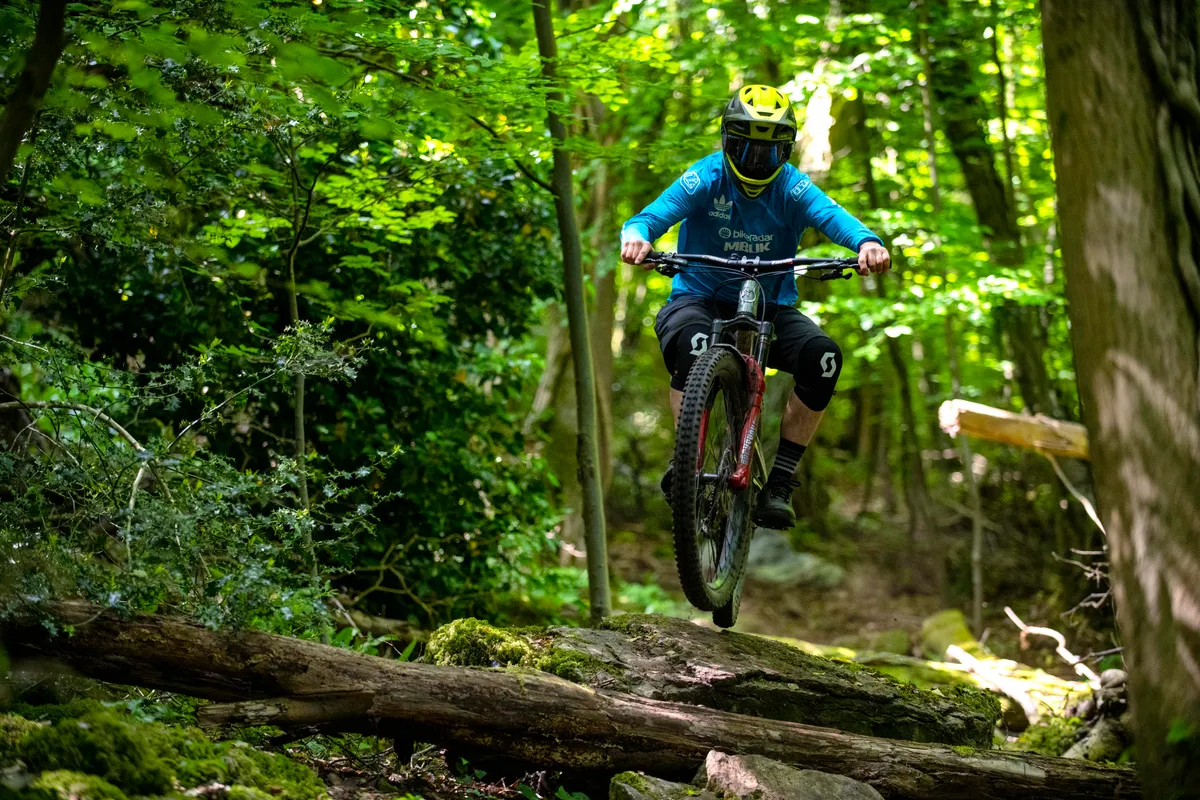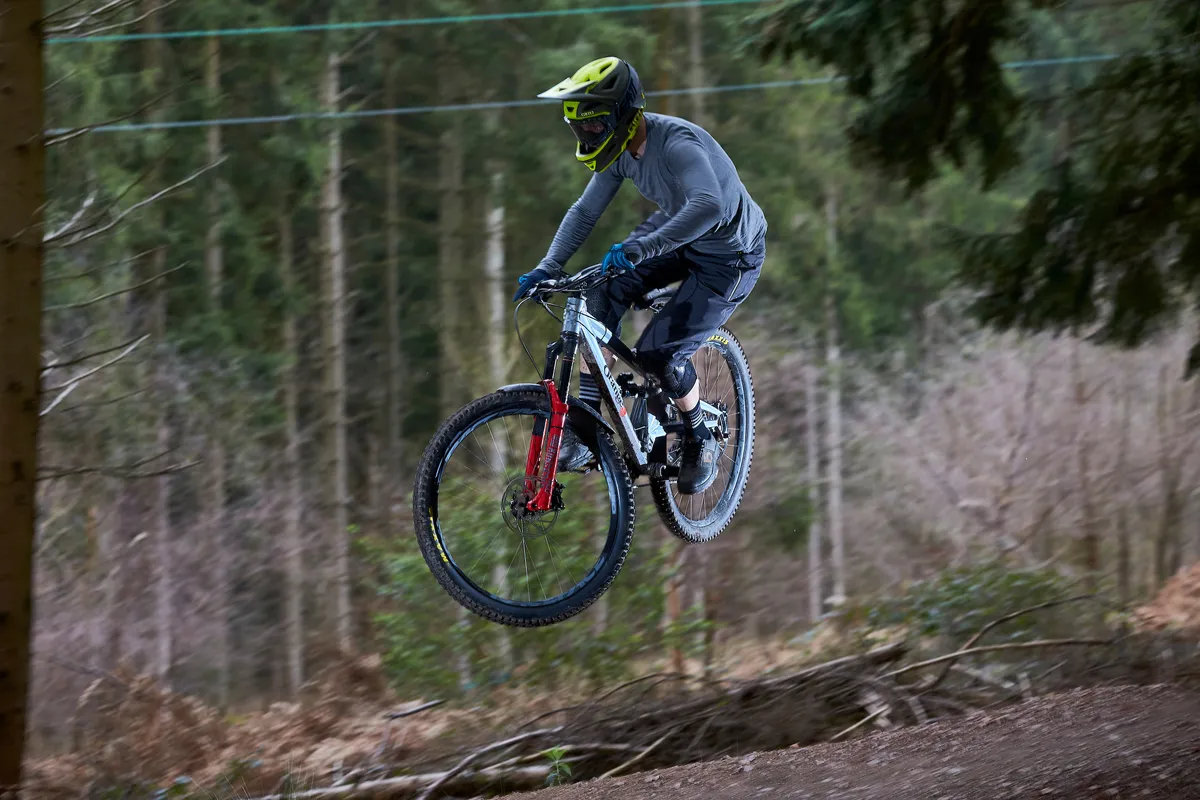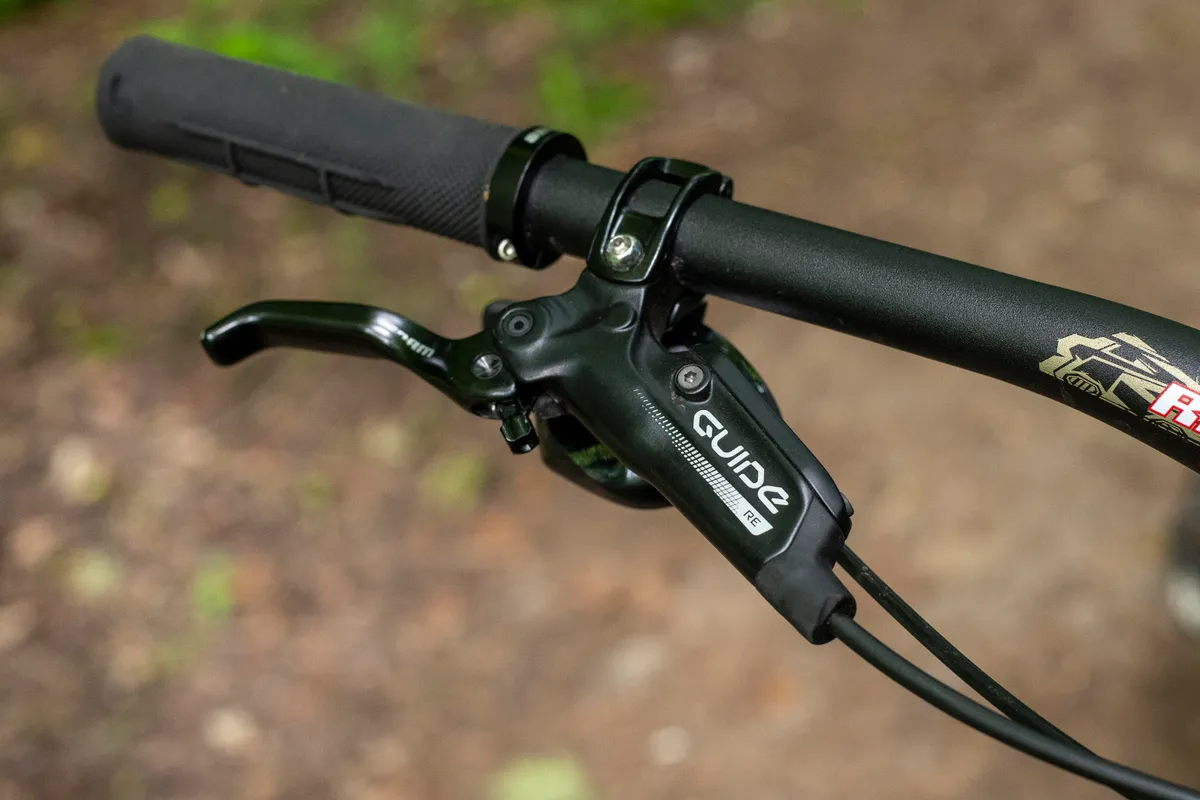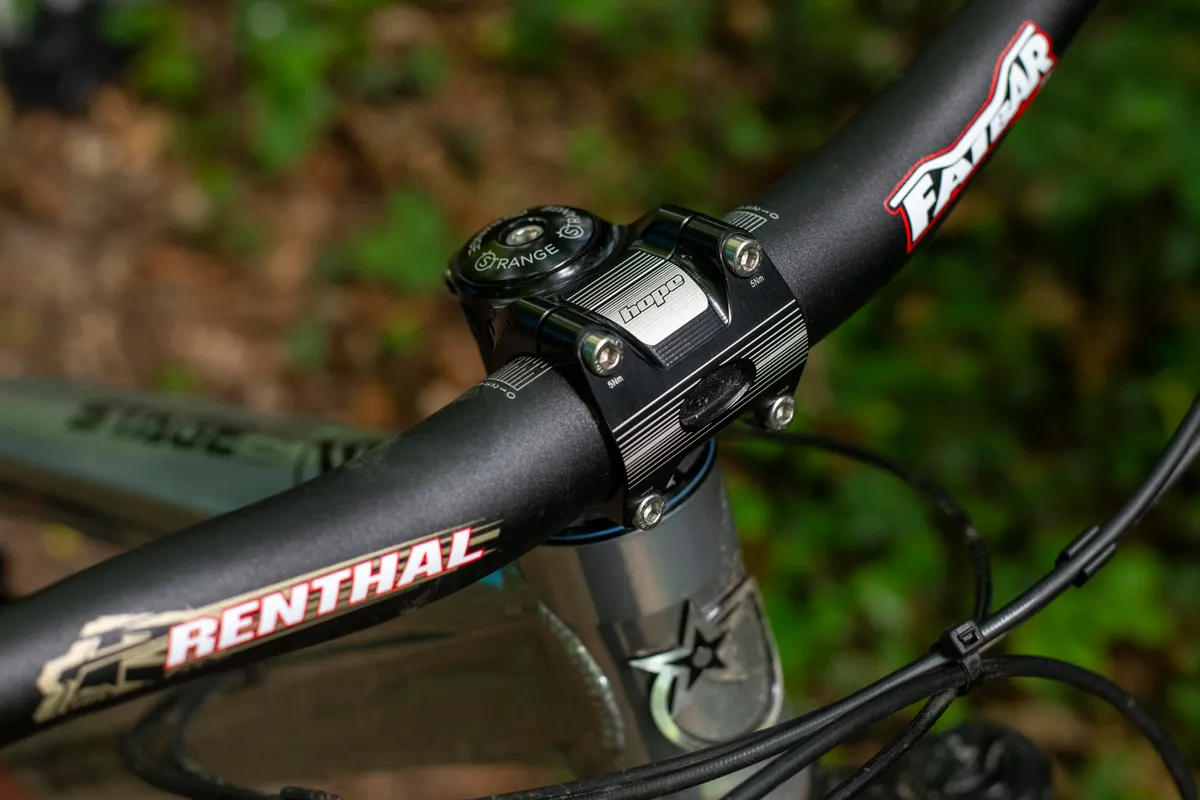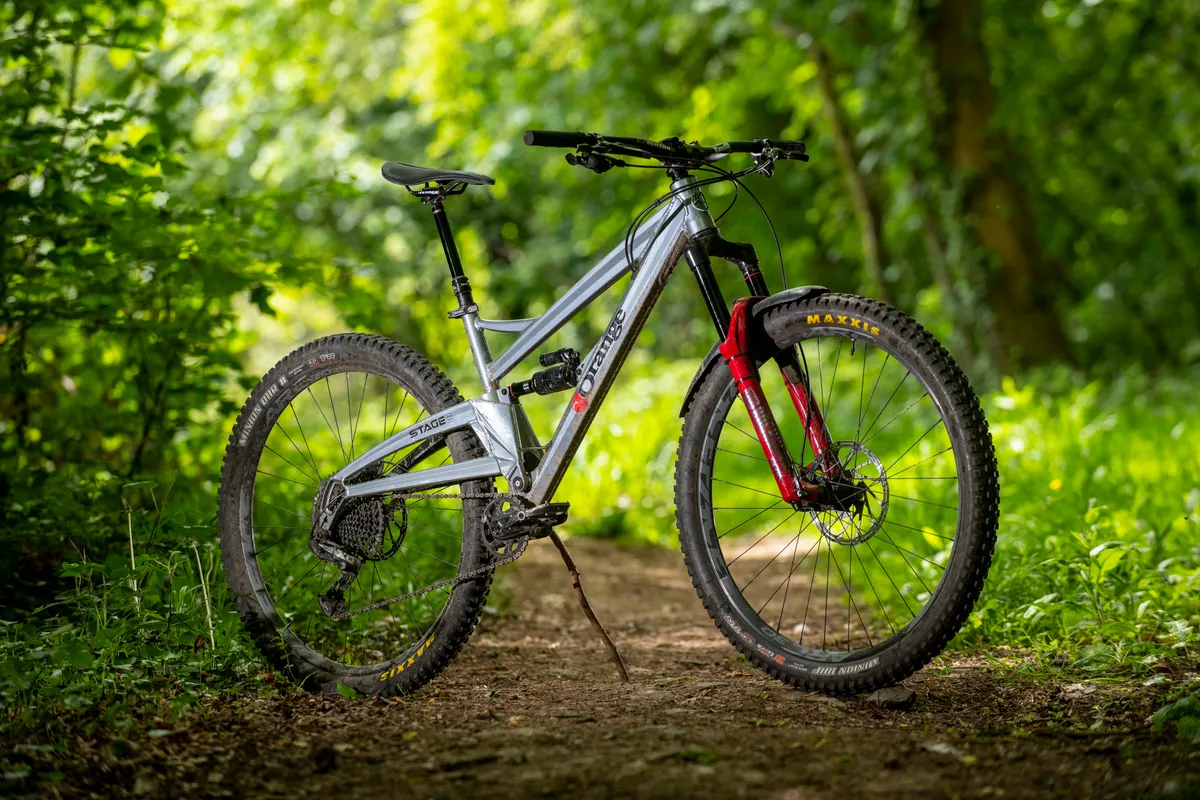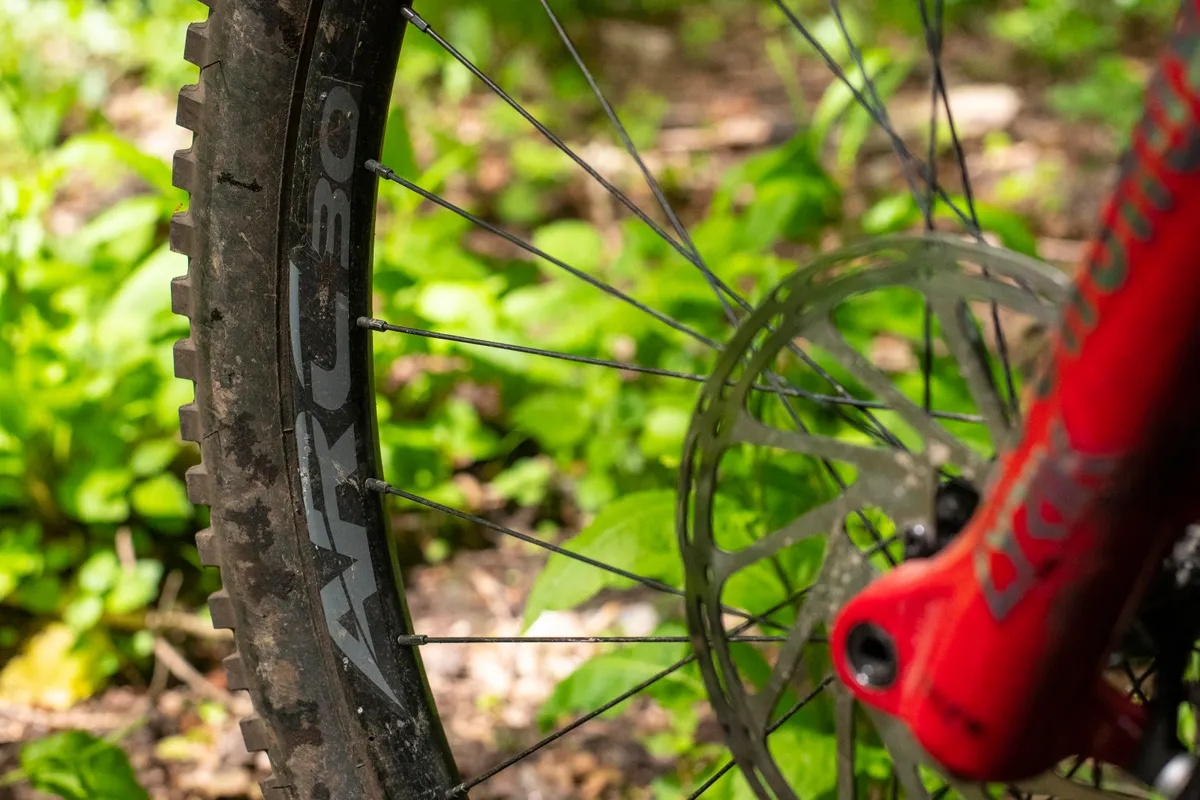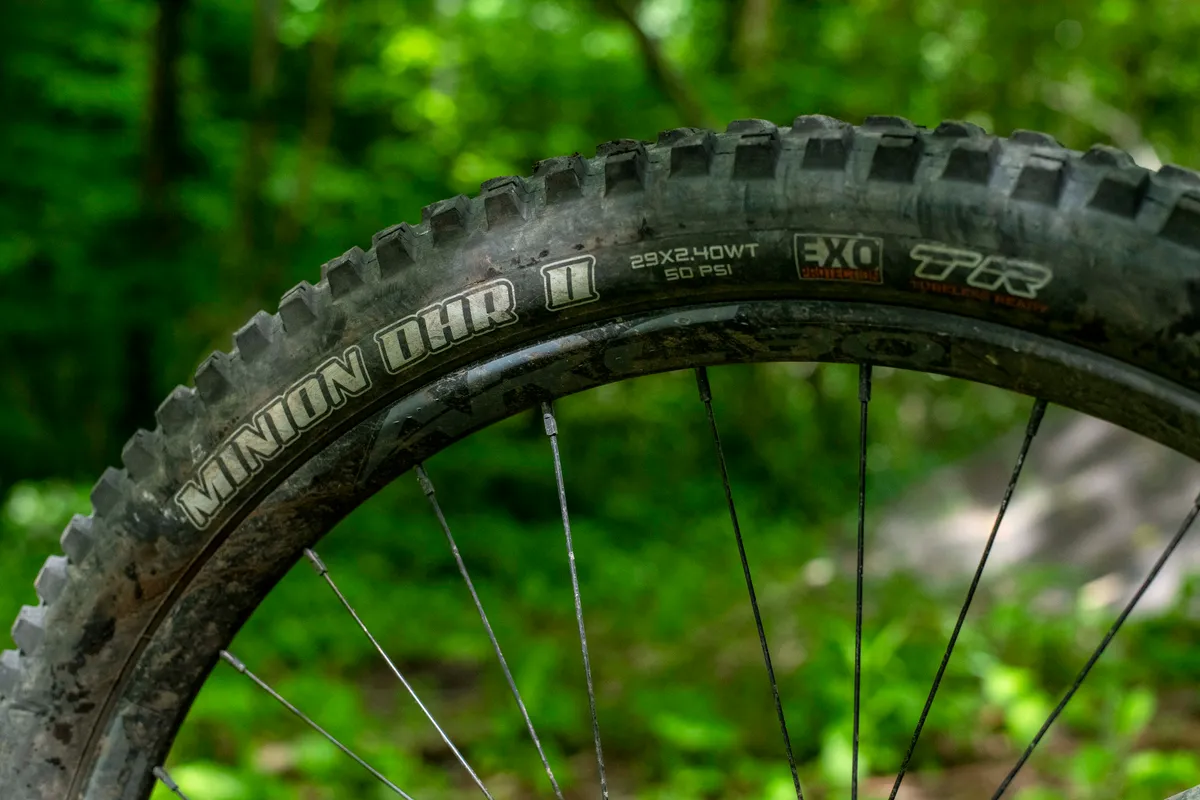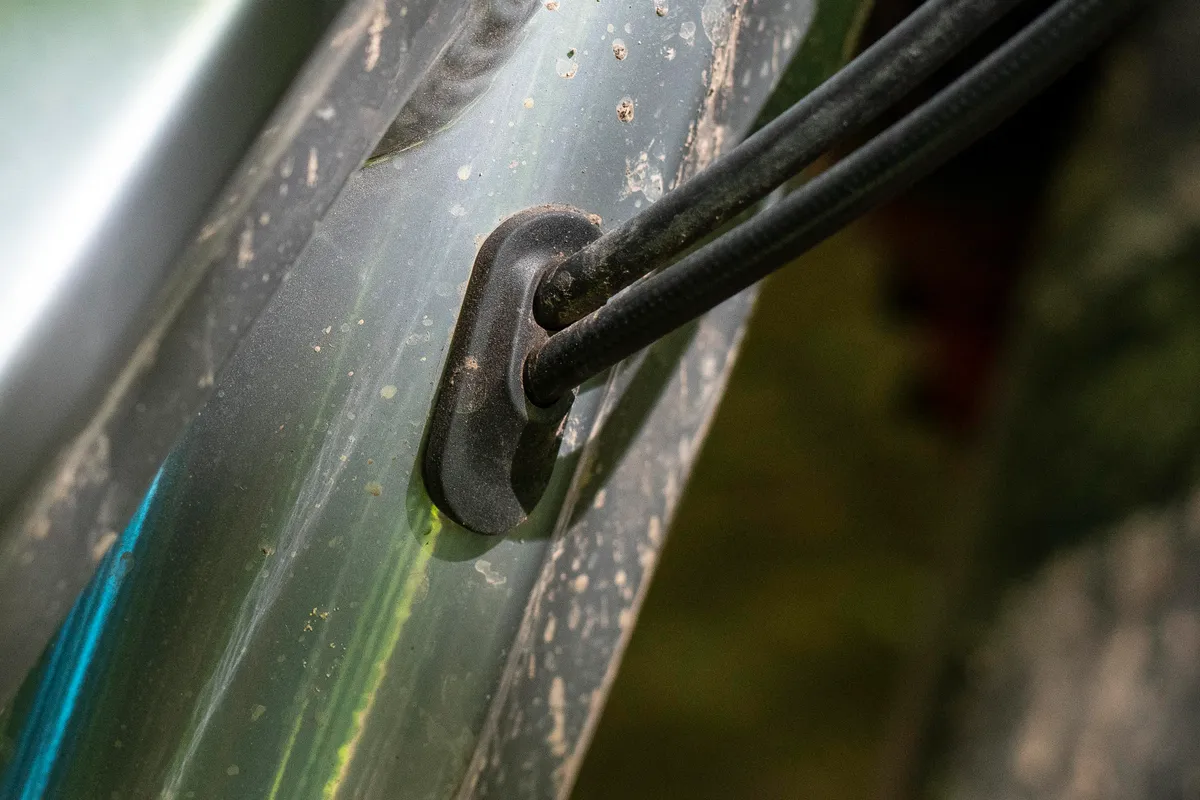Orange Stage 6 RS long-term review conclusions

The extended period I’ve spent on the Stage 6 is testimony to how much I’ve enjoyed my time on this simple, tough and fun-to-ride single pivot enduro bike.
In fact, I’ve had so much fun on my Stage 6 that when it was superseded by a newer model, I wasn’t tempted to upgrade despite having the option.
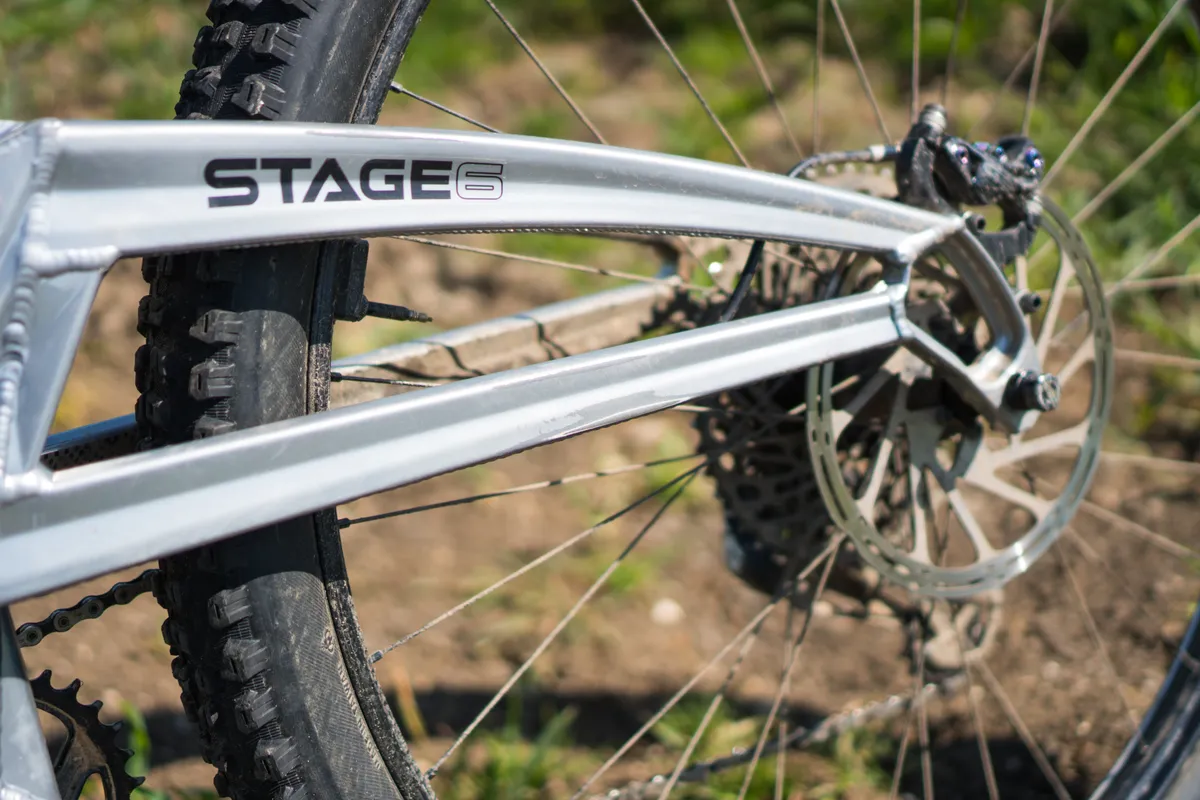
Way back at the start of 2019, I was after a reliable, gravity-focused bike that could be pedalled to the top of my favourite descents, and the Orange Stage 6 has delivered.
I’ve not had to change any pivot bearings or shock bushings – the only moving parts on the frame – during my entire ownership, and that’s not because I’ve become accustomed to a rattly rear end, it’s because they’ve stood the test of time and haven’t worn out.
And that’s been with an usually high amount of neglect, ranging from not washing the bike at all for months, or blasting it with my Muc-Off jet wash until it was gleaming, to my overzealous appetite for tarmac cutties and squaring-off turns that put high twisting loads through the bike.
The Stage 6 has taken it all in its stride. Okay, so I have had to tighten the main pivot a few times but that only needed two Allen keys and can be performed trail-side or mid-ride.
As for things that have worn out, the SRAM drivetrain bore the brunt of the UK’s wet weather. I’ve reported on this in a previous update but never got round to swapping out the used parts before parting ways with the bike.

Elsewhere, there has been impressive resilience from the RockShox Lyrik RC2 forks that haven’t been serviced and still feel good – although I probably should have at least give the lowers a re-lube at some point.
The RockShox Reverb dropper post hasn’t needed a bleed either and the Race Face Arc 30 wheels have remained straight and true.
My main gripe was with the RockShox Monarch Plus RC3 rear shock. It caused the suspension to be harsh off the top and blow through its travel too quickly. This meant I had to run high spring pressures on the shock to compensate for the bike’s in-built kinematics.
Having ridden the Stage 6 with a Fox Float X2 – a high-end damper with loads of adjustment – I would recommend anyone looking to buy this bike seriously considers spending a bit of extra cash to spec a top-tier shock from either Fox or RockShox. There’s no denying the extra tech and spring volume seriously improves how it rides.

Orange Stage 6 RS highs
The Stage 6’s fun-loving, no-nonsense ride is its best quality. When ridden aggressively it’s possible to charge fast through pretty much any terrain without much thought.
Focusing on the trail ahead by picking lines, pumping bumps and generating speed from small undulations will get the most from it. This extra speed and smoothness feels rewarding and exhilarating.
Although the Stage 6 RS is quite expensive, its spec has weathered the rigorous test of time fairly well and I don’t believe that coughing up for a more expensive model would have improved how long it could go without a service or the swapping out of parts.
On balance, a cheaper version probably wouldn’t have worn out any quicker either.
Orange Stage 6 RS lows
Knowing the Stage 6 would have ridden better and been more adjustable had I specced a Fox Float X2 from the start, I’ve always been a bit frustrated with the rear end’s limited performance.
I did give the RockShox Monarch Plus RC3 the benefit of the doubt by persevering, playing with spring pressure and volume, and getting it re-tuned. Unfortunately, I couldn’t get it working how I wanted and don’t think the shock is especially suited to the bike’s suspension kinematics.
The Stage 6’s suspension isn’t the most active at the best of times and this issue has been compounded by the underperforming Monarch Plus RC3.
The latest Stage 6 isn’t available with this shock and can only be bought with a Fox DPX2 or Float X2, or RockShox’ Super Deluxe, which is good news.
During my time with the bike I’ve had to swap out the dropper post and brakes a few times when I’ve been testing different units, such as Manitou’s Jack dropper post.
Internal cable routing drives me crazy, especially if it’s fiddly like on the Orange. Had it not been for Park Tool’s IR-1.2 internal routing kit I think I would have given up on the internal cable routing and externally-mounted my brake lines.
That’s certainly something to consider if your mechanic skills aren’t particularly honed or you lack patience.
Orange Stage 6 RS long-term review verdict
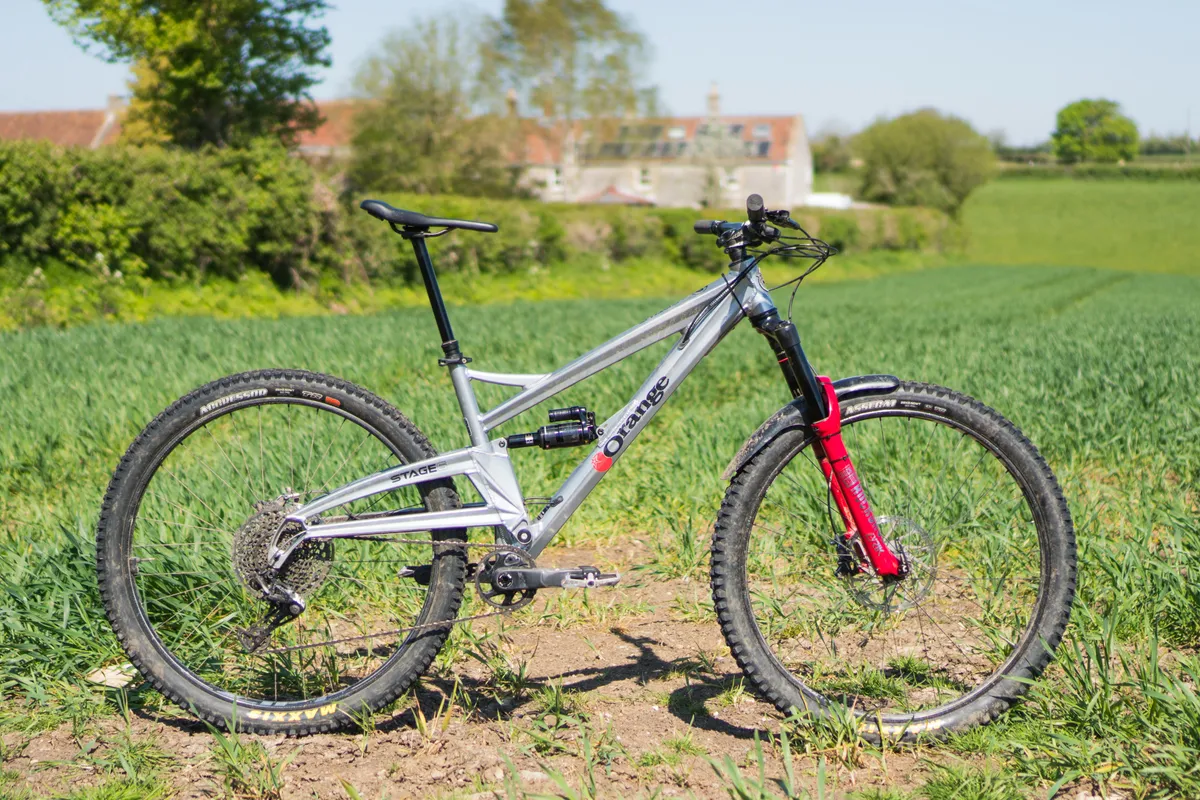
The Stage 6 is an exceptionally fun to ride, easy to maintain bike that responds best to an active and involved riding style.
It’s got good geometry that’s even better on the updated version and the kit performs as well as you’d expect, considering it’s all mid- to high-level parts from well-known manufacturers.
I’d certainly consider having a Stage 6 again but would make sure the rear shock is up to the job before committing next time.
The original article continues below.
Orange Stage 6 RS long-term review update six
Now I’ve spent a bit more time on the Zipp 3Zero Moto wheels I have certainly noticed that they make the ride on the Stage 6 smoother.
Although they don’t necessarily absorb bumps in the same way that soft tyres or supple suspension can, they do make the bike have a marked feeling of compliance and smoothness on really rough terrain.
Of course, that smoothness is relative. If you crash and bang though rough and wild terrain they aren’t going to turn what you’re feeling into sanitised numbness, but they do help with bike control. And when you’re really pushing your limits it does feel like they aren’t hindering speed and control.
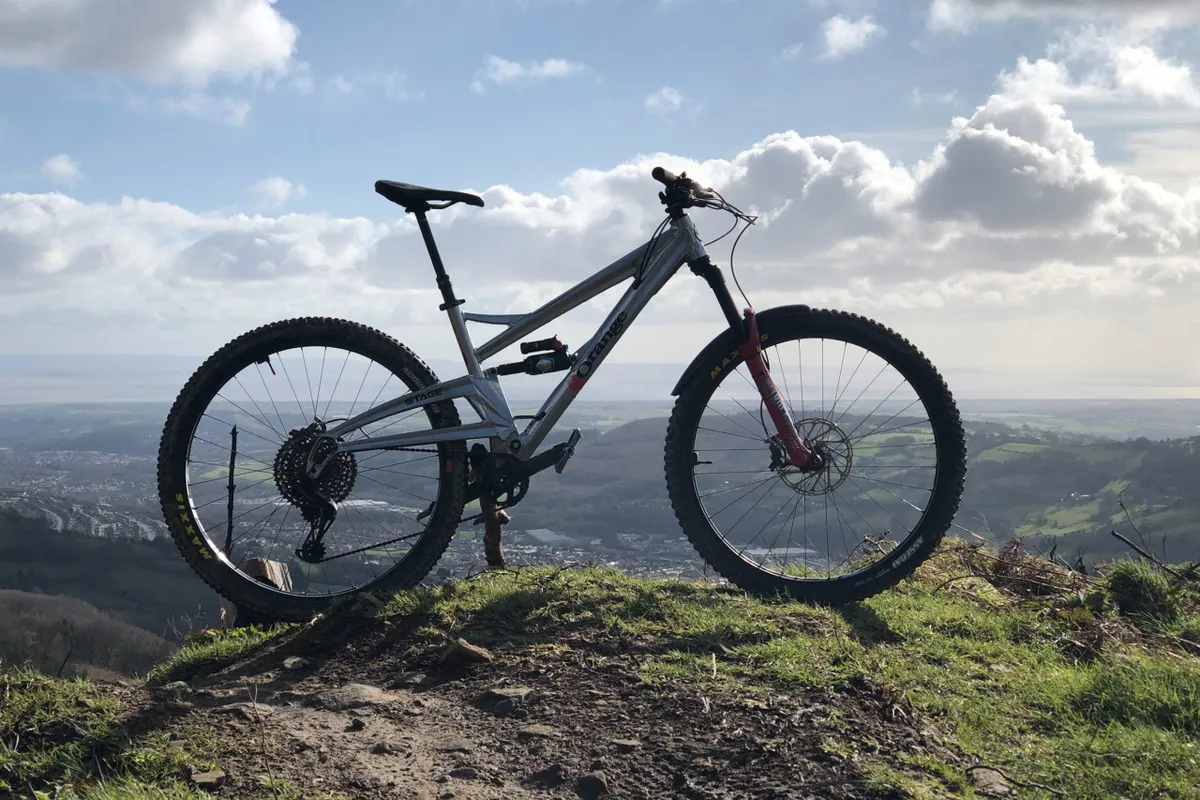
Some of my impressions might differ to to Seb’s findings, but this is probably down to how I like my bike set up with stiff suspension and harder tyres, putting the onus on other components to do more of the bump absorbing work, rather than a disagreement among testers.
I’ve also been testing the Manitou Mara shock, and my initial impressions of it feeling like it needs a larger or higher-pressure negative air spring still hold. I’m pretty close to compiling all of my thoughts into a full review soon, so keep an eye out for it online soon.
So what’s next for the Orange? As someone who’s fairly adverse to change, I think it might finally be time to chop the Orange for a new bike – this has to be one of the longest test periods for any bike.
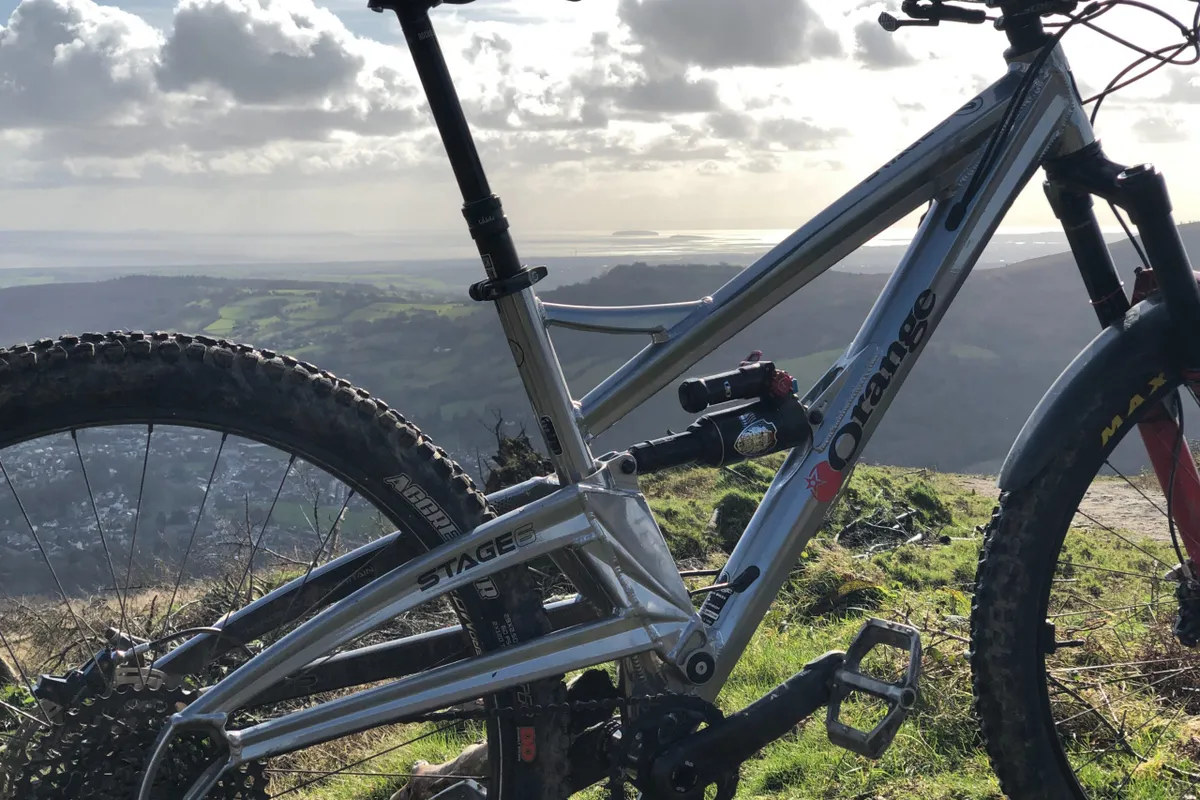
I’ve got a few models and bikes in mind, but maybe the new Stage 6 is a good bet. I’ll be able to see how the bike has been updated, too. Equally, I did enjoy my time on the latest Pivot Switchblade when I tested it in Gran Canaria earlier this year.
Although I’m also open to suggestions for bikes that are suited to gravity-focused riding and can be pedalled to the top of the hill. So, if you’ve got any ideas let me know.
I’m hoping that my next update will be the last one on the faithful Orange.
Orange Stage 6 RS long-term review update five
True to the form of many mountain bikers – especially those who are strapped for cash or just lazy – since my last update I’ve managed to do absolutely nothing about the worn-out drivetrain currently sitting on my bike.
Instead, I’ve diverted my attention to trying out a set of Zipp’s 3Zero Moto wheels that our Seb tested earlier this year. Zipp claims that the wheels offer exceptional levels of compliance, which should improve grip and comfort.
While Seb wasn’t totally convinced about their performance, noting Zipp’s claims about the wheels not to be as pronounced as he imagined they might be, he did notice that they were good at damping bigger impacts, particularly when the tyre bottomed out on the rim.
It’s also worth noting that Seb runs lower tyre pressures than I do and, after testing 15 wheelsets back to back, he concluded that tyre pressure is the most vital element for ironing out trail buzz.
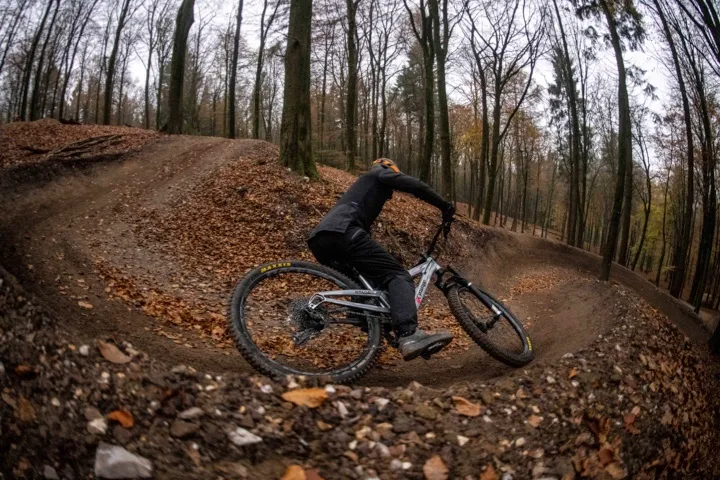
So, because of my preference for higher tyre pressures, it might be possible for me to feel the benefits of the Zipp 3Zero Moto wheels more. I’m excited to find out and will report back accordingly.
I’m also hoping to put a bit more time on the Manitou Mara rear shock and, while initial impressions are good, it certainly feels like the negative air spring could do with being both bigger and having more pressure in it.
Unlike a lot of shocks on the market, the Mara’s negative air spring pressure doesn’t equalise as you inflate the positive chamber. Instead, it’s inflated during shock assembly and inflates to a pre-defined pressure.
The Mara Manitou supplied to me for testing has the middle-sized negative air spring. I am currently in the process of seeing how performance changes after refilling the negative spring – by simply removing the shock’s sleeve and then reinstalling it – and am hopeful this will solve the feelings I initially experienced.
The next step will be to get the bigger negative air spring to see how this changes the shock’s performance. Like the wheels, I’ll report back!
Orange Stage 6 RS long-term review update four
It only feels like yesterday that I was enthusiastically ripping the cardboard box open for my 2018/2019 Orange Stage 6 RS – in probably one of the hastiest and most rushed moments of recent memory – in a bid to throw my leg over a box-fresh bike.
After a solid 10 months together, those enthusiastic pre-ride feelings are still there and I’ve really gelled with it during this time. But that doesn’t mean that it’s not had its faults.
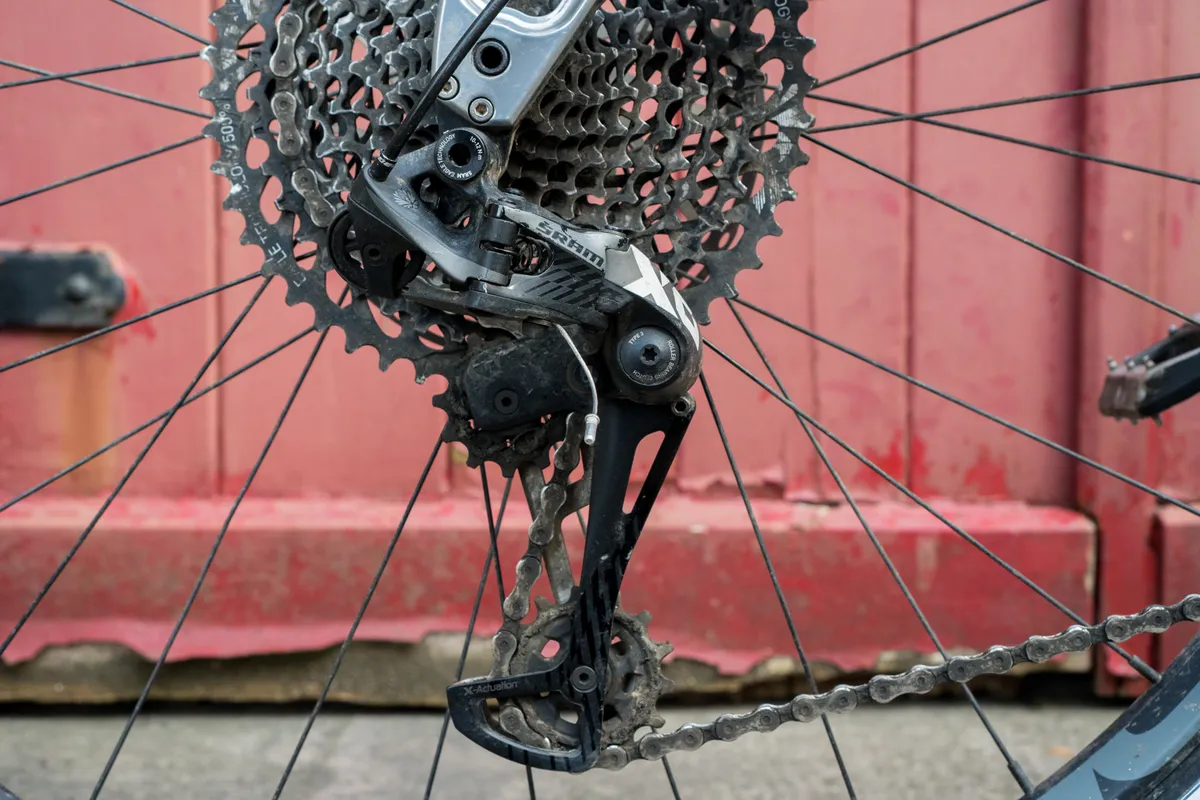
Most recently, the problems have been sprouting from general wear – notably with the rather used and abused drivetrain.
The chainring’s rather grim life of helping to propel the bike forward through mud, dust, sand, grit and rain has meant that its teeth have started to wear significantly and, when first gear is selected, the angle of the chain successfully pulls it from the chainring’s teeth.
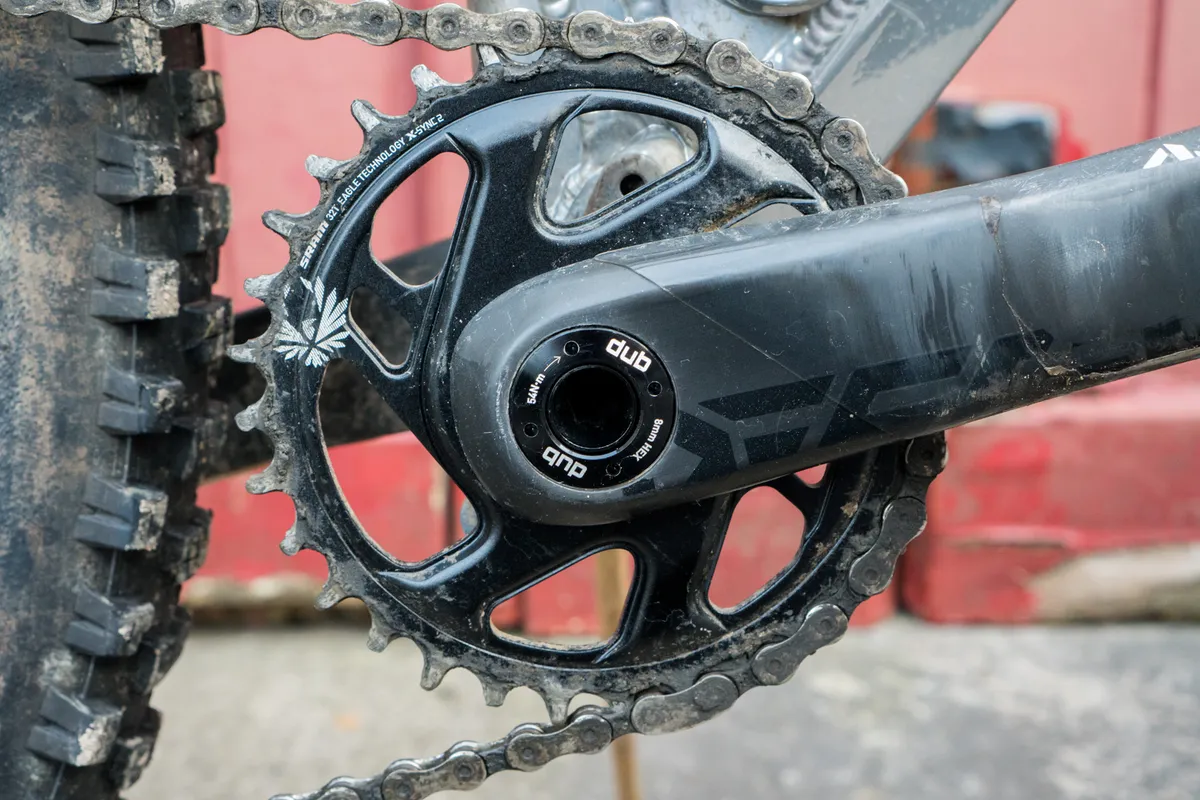
Although it’s not the end of the world, it can get frustrating. The remedy, of course, is a replacement chainring. SRAM’s X-Sync narrow-wide Eagle chainring will cost around £80 to replace, although aftermarket options from other brands are going to cost quite a bit less.
While you’re replacing your chainring, it might be wise to check out how worn the chain is too – SRAM 12-speed chains start from around £25.
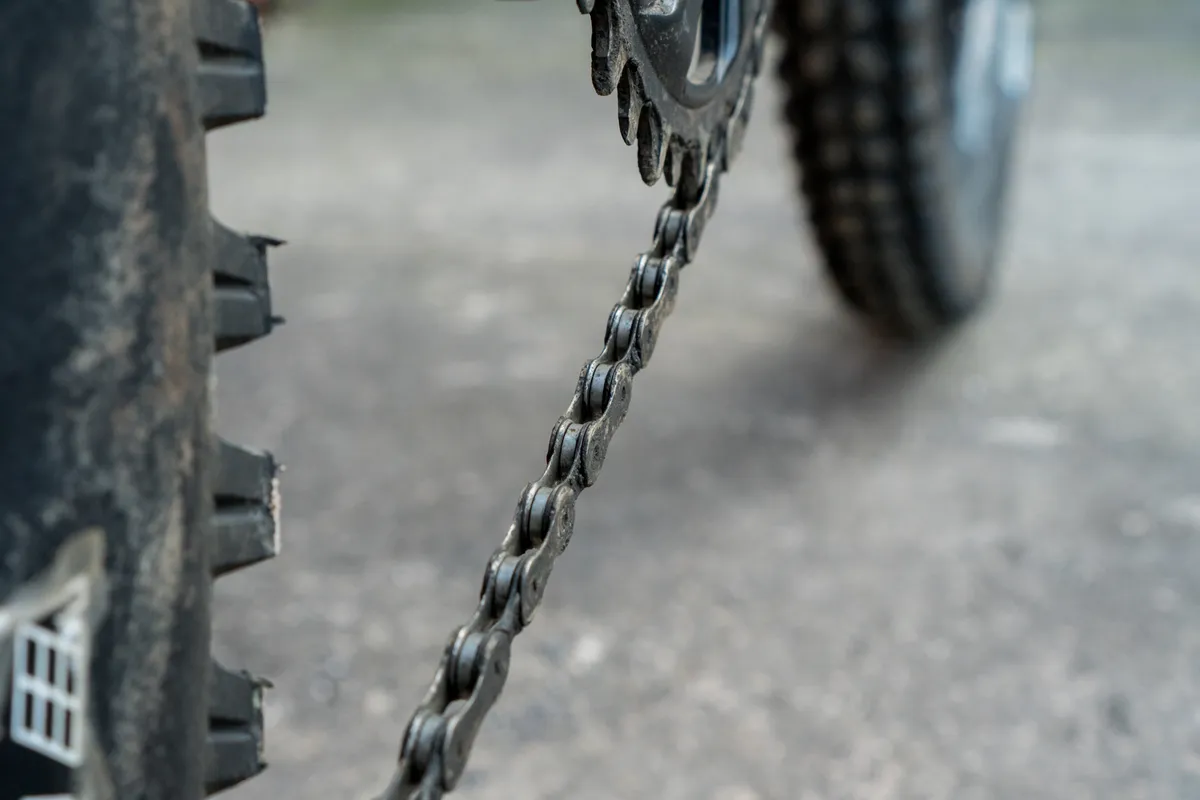
If you do replace your chain, it might also be wise to change the cassette because chains and cassettes are ‘mated’ to one another.
The cheapest 12-speed cassette from SRAM is the NX at £99, but it uses a Shimano freehub body not SRAM’s XD driver. I’d need the GX Eagle cassette at a minimum and would be looking at a £170 purchase price.

To get the Orange’s drivetrain ready for another winter of abuse I’d be looking to spend £275, which isn’t an insignificant amount of money in one hit, although when divided up over the 10 months of relatively abuse-filled ownership, keeping the Stage 6 running sweet works out at £27.50 a month. That’s really not too bad and much cheaper than a car or a Sky TV subscription.
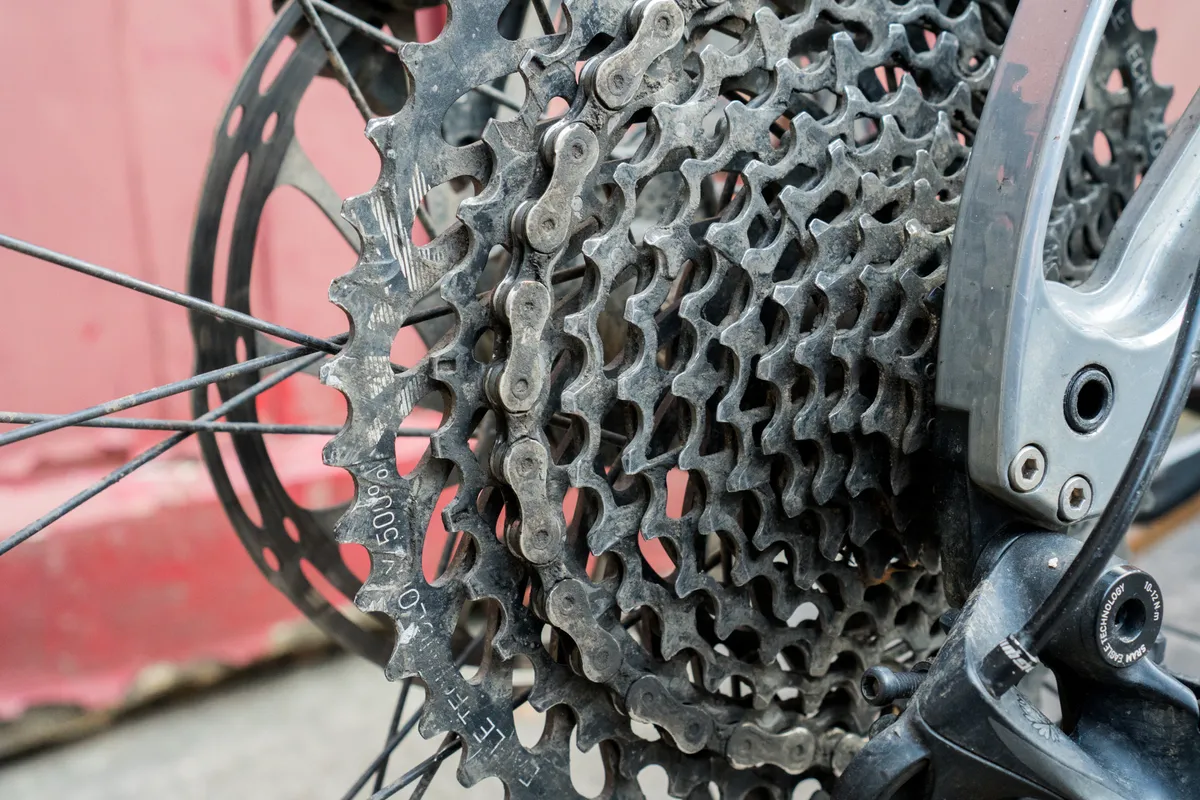
What else has happened in the land of Orange, then? Well, the British brand has released an updated Stage 6 (among others), which we spotted at Eurobike, with a longer reach, steeper seat angle, slack head angle and revised suspension kinematics.
As tempting as it is to ask Orange for a cheeky upgrade – because I’m sure the new bike is an impressive improvement over the older one – I’m going to stick with my 2018/2019 model. That’s because I’ve finally managed to get a new shock for it.
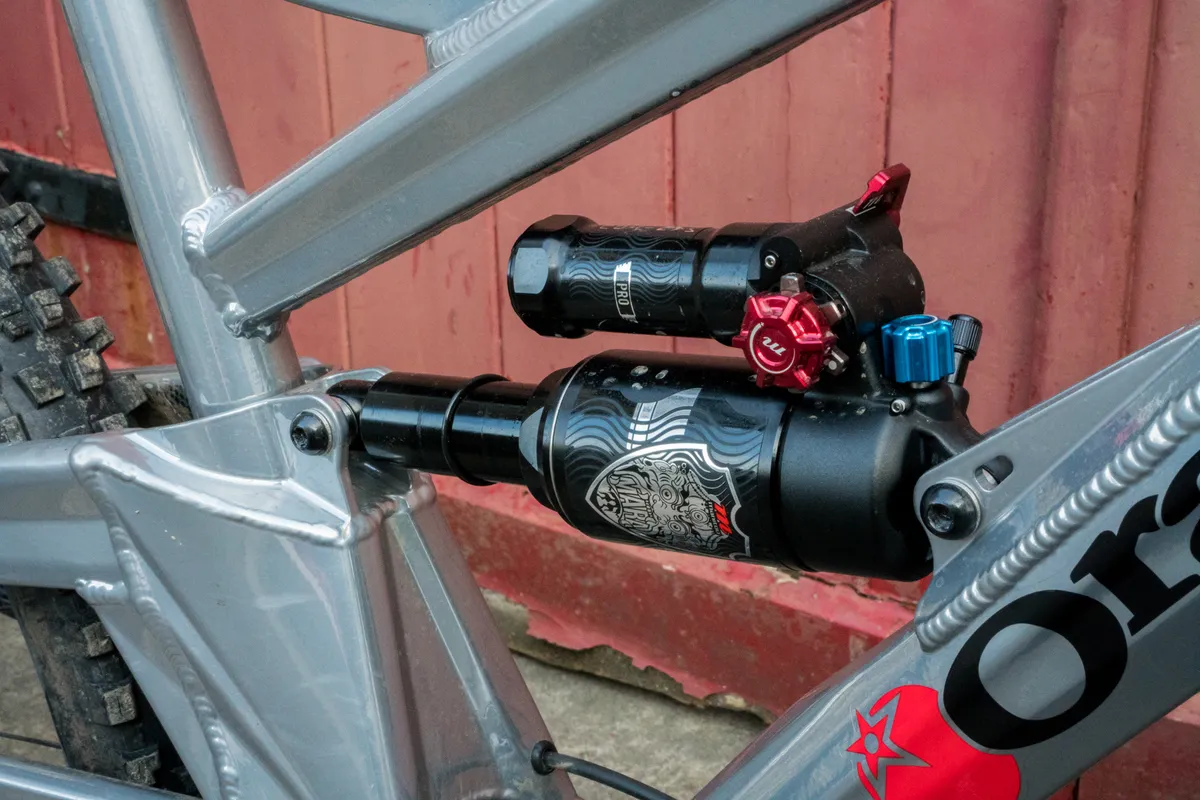
To match the Mezzer fork, Manitou has sent out a Mara — its new rear shock — to test. Hopefully the Mara will provide a solution to the problems I’ve experienced with the RockShox Monarch that’s supplied on the bike.
Stay tuned for more updates as I continue to put the Stage 6 through its paces.
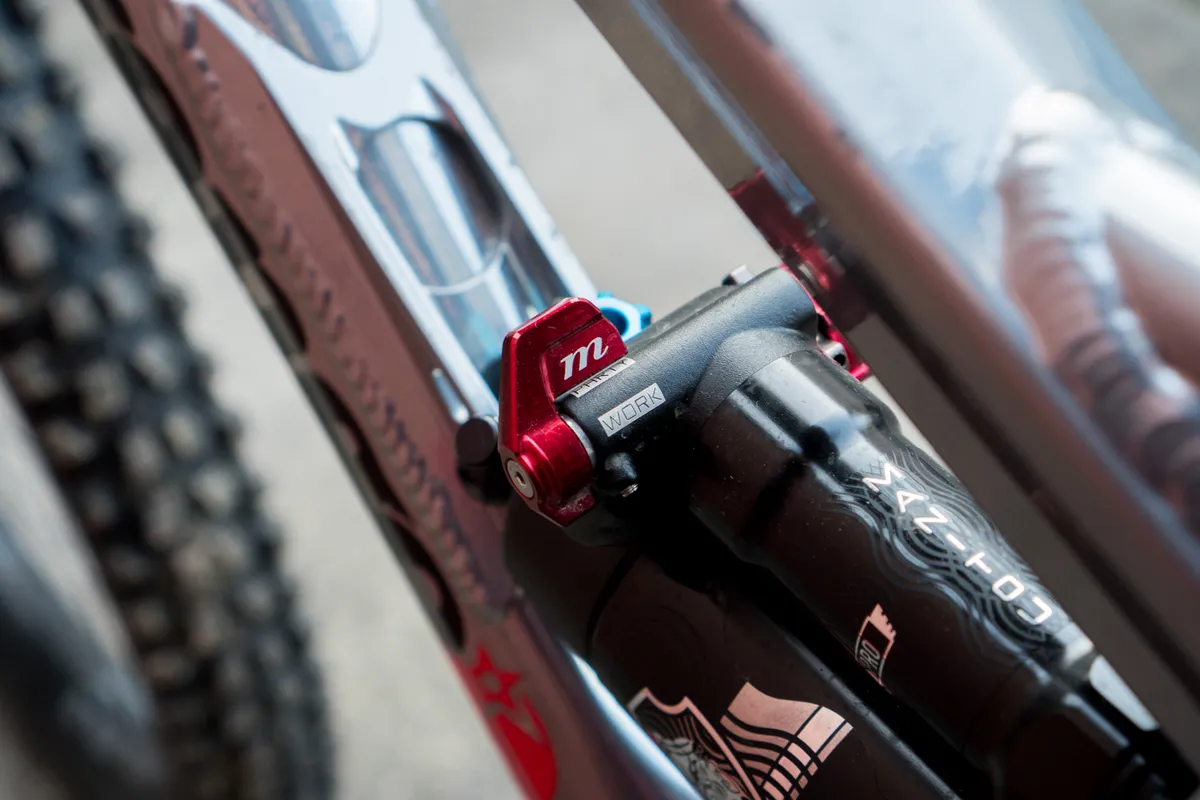
Orange Stage 6 RS long-term review update three
Where does the time go? It seems like this year has been on constant fast forward and the summer has been passing at a deadly rate. But that isn’t to say that I’ve not had much opportunity to ride my Orange.
Actually, quite the opposite is true. I’ve been out on it loads during the nice, hot weather. And that’s probably why it feels like time has been flying. What’s changed then?
Manitou Mezzer fork
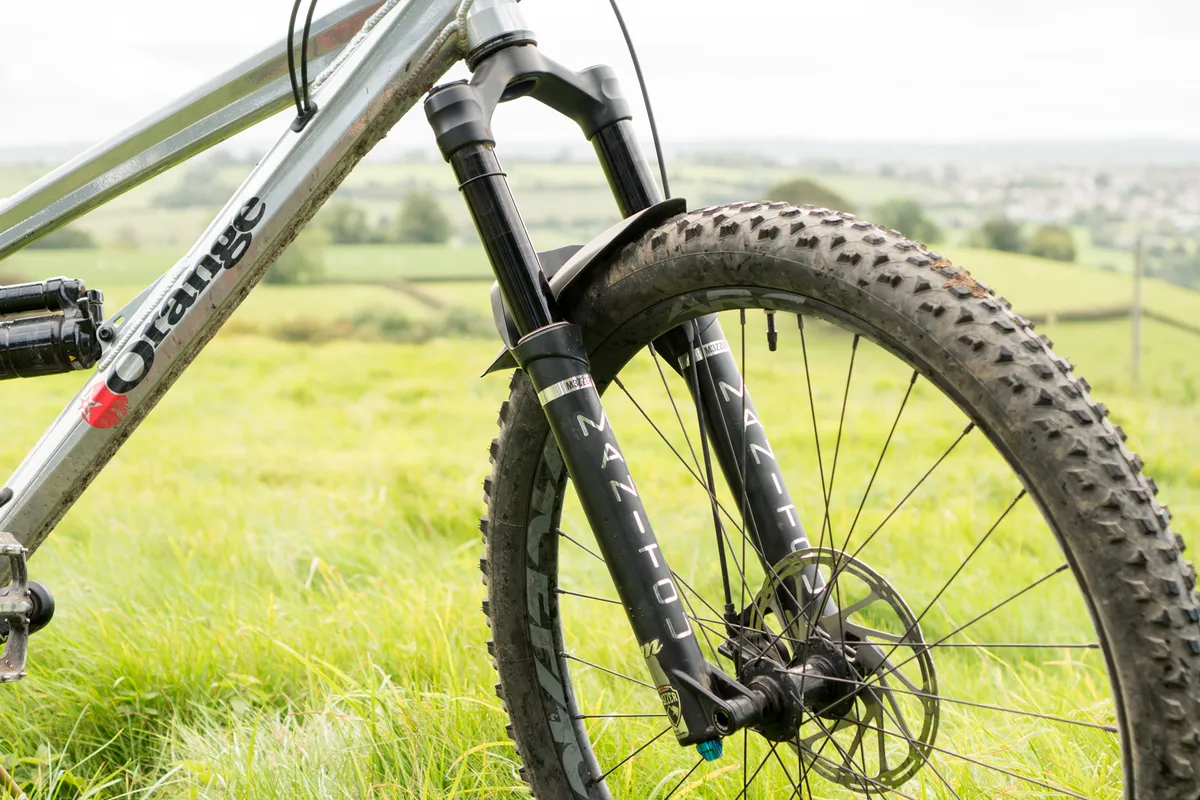
I’ve managed to swap some parts out — finally. Unfortunately, those parts weren’t quite the ones I was hoping to swap — namely the rear shock, but also the wheels at some point (see the updates below for more) — instead I’ve managed to get my hands on a Manitou Mezzer fork and a set of Pirelli mountain bike tyres.
Swapping out the RockShox Lyrik fork for the Mezzer wasn’t something I was expecting to do mainly because I don’t have any complaints about how the Lyrik performs. In fact, it would be fair to say that the Lyrik is probably one of the best-performing enduro forks on the market at the moment, so the Mezzer’s got quite high expectations to live up to.
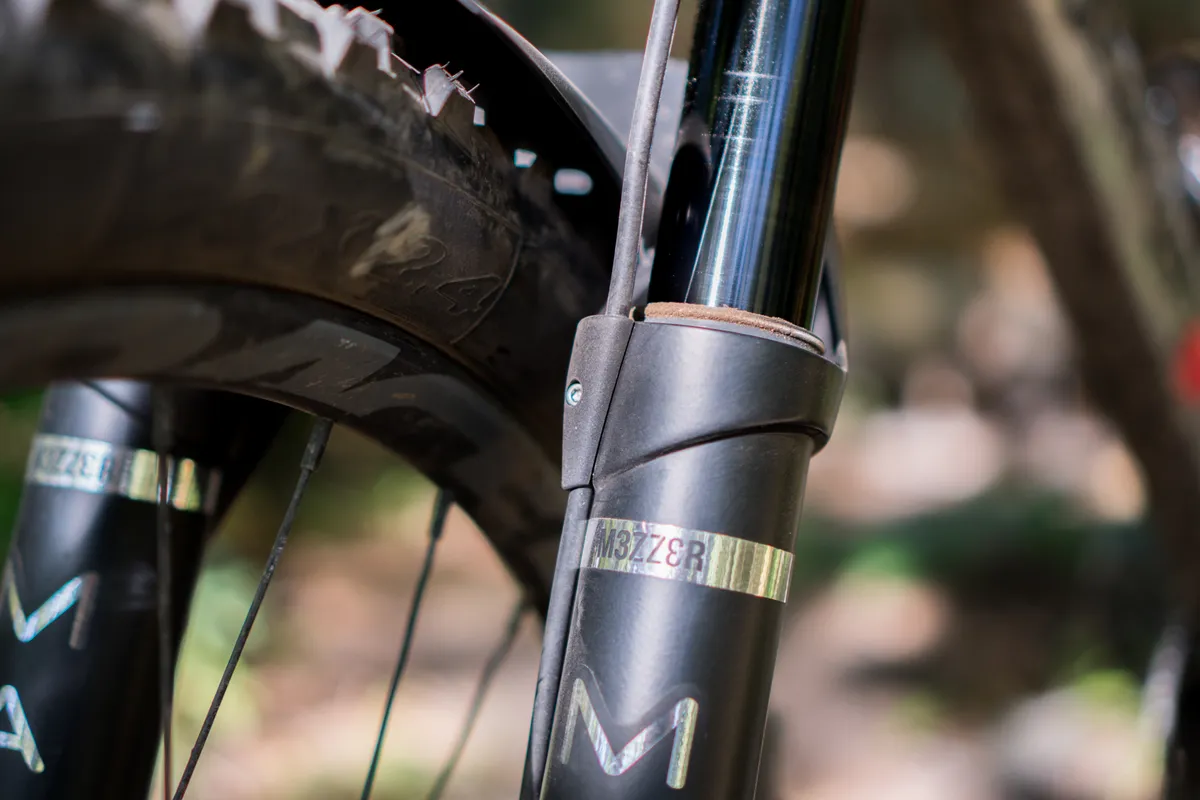
Fitting them was relatively easy; the steerer tube needed cutting down and a star nut installing. The brake mount from the Lyirk was the same and the custom-built Mezzer mudguard was simple to fit with just two Allen bolts attaching it.
Likewise, the cable guide just needed fitting and it’s good to have the option of fitting it either on the front or rear of the fork’s brace.

I encountered a small issue when fitting the front wheel. The Mezzer fork isn’t compatible with the torque caps that are fitted on the Hope Pro 4 hubs from the factory, so that they work with the Lyrik fork — these are the adaptors either side of the hub that give it the correct axle spacing and diameter for the fork.
£18.50 later and the wheel was ready to work with the Mezzer forks.
I’ve done some preliminary testing on the forks and can confirm that, while set up is a little tricky — especially getting the correct air pressure dialled — they seem to be performing exceptionally well out on the trail and offer a surprisingly good balance between small bump sensitivity and ramp up.
Pirelli Scorpion S and R tyres
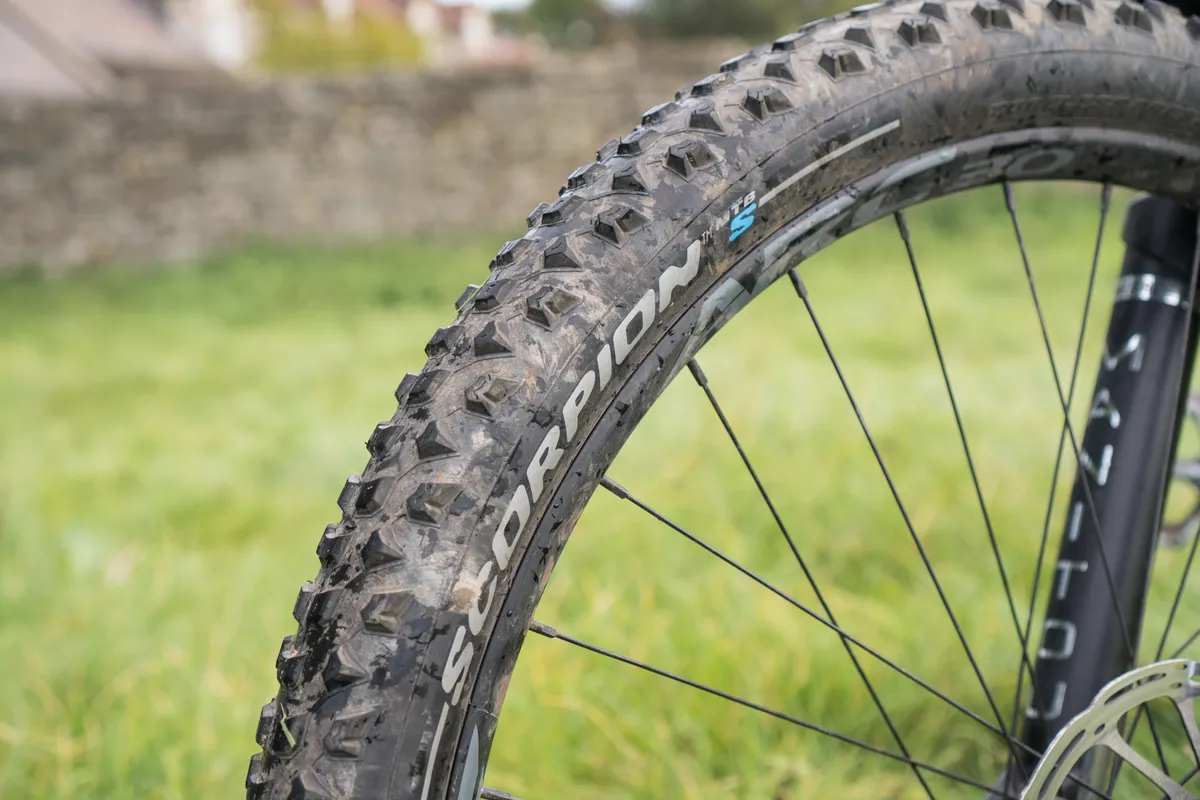
As a self-confessed Maxxis and Schwalbe fan, it’s always tricky swapping to a different brand of tyres. But in the true spirit of being a bike tester, I’ve got to be as open minded as possible.
Pirelli launched its first range of mountain bike tyres at the start of 2019, but has slowly been releasing more sizes over the course of the year. Now it's got some chunkier tread on offer, it only seemed appropriate to a slap a set on my bike.
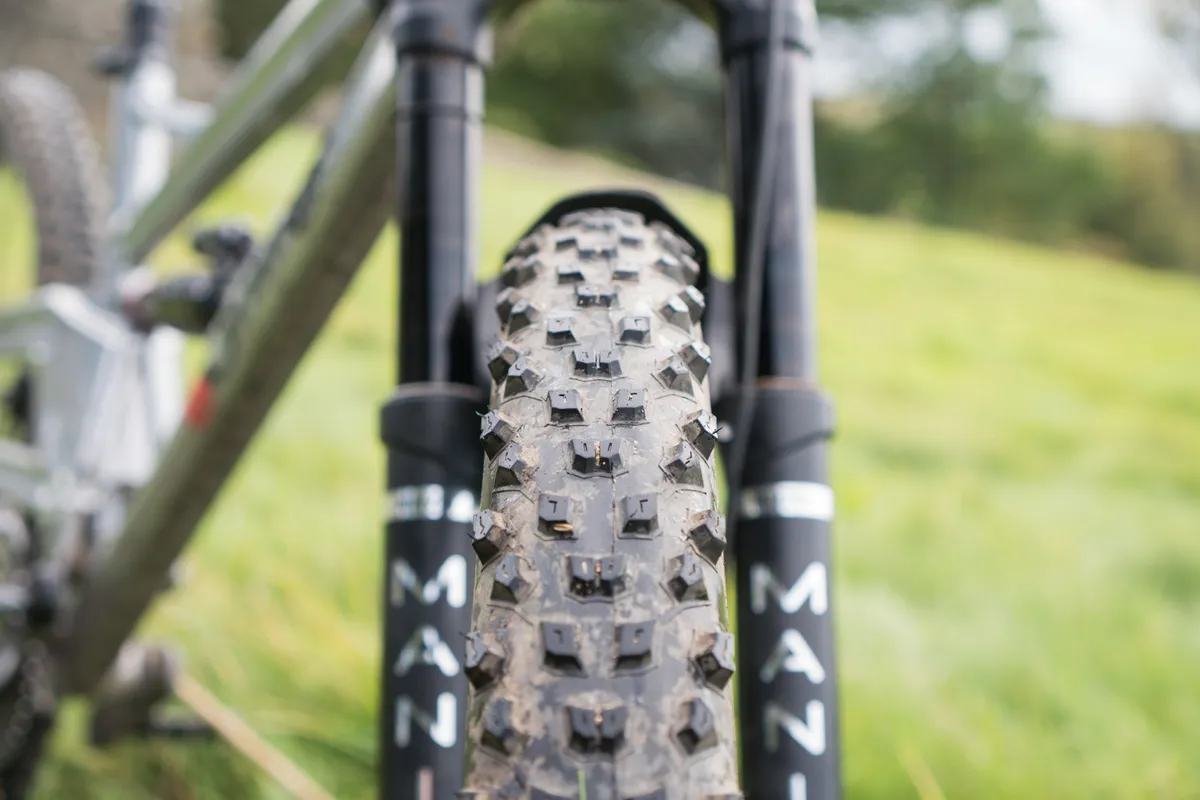
I’ve opted for the S — which stands for soft, denoting the type of terrain they work best on — to the front of the bike because it best suits the UK’s soggy conditions and an R — the rear-specific tyre — on the back of the bike.
Like the fork, I’ve only done some preliminary testing, but they feel good and the chunky tread seems well-suited to the UK’s climes.
Expect more in the next report and full reviews soon.
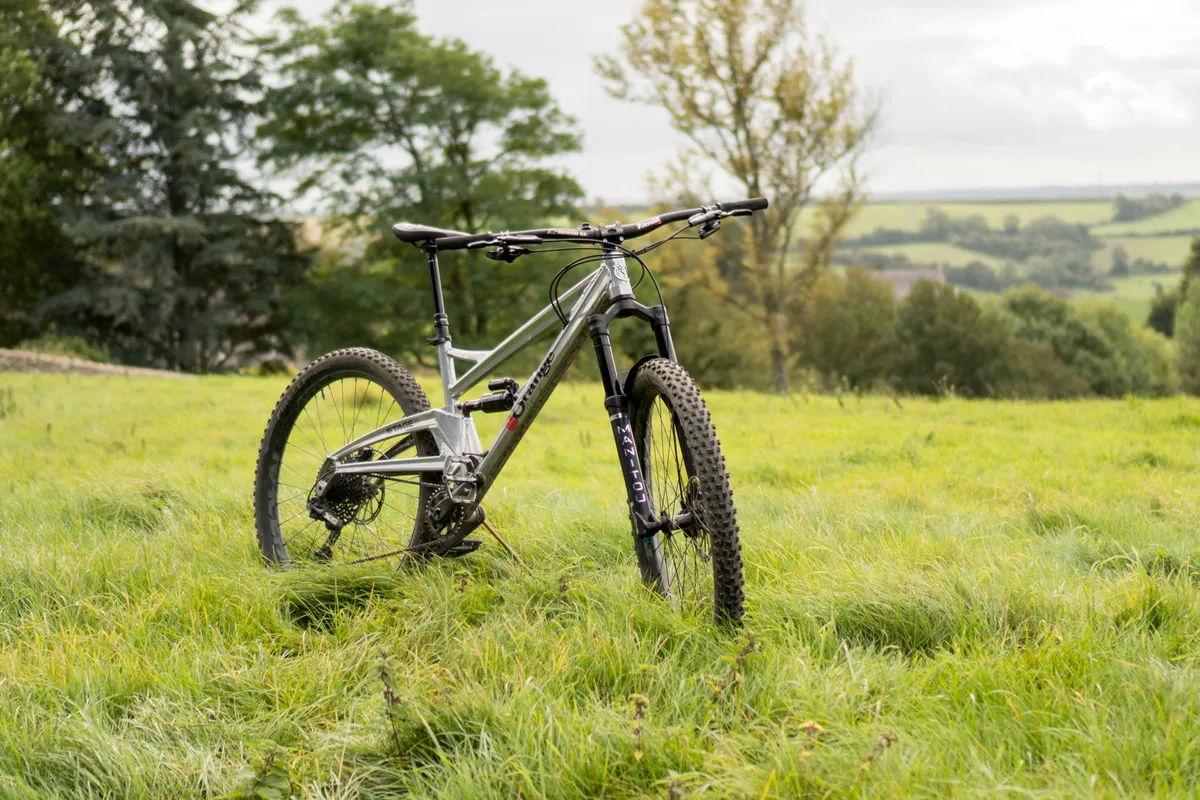
Orange Stage 6 RS long-term review update two
After finally getting my act together and handing the shock over to Jake from Sprung Suspension to fettle, I can confirm that the Monarch Plus RC3 just isn’t up to the job of suspending the Orange’s 150mm of rear wheel travel.
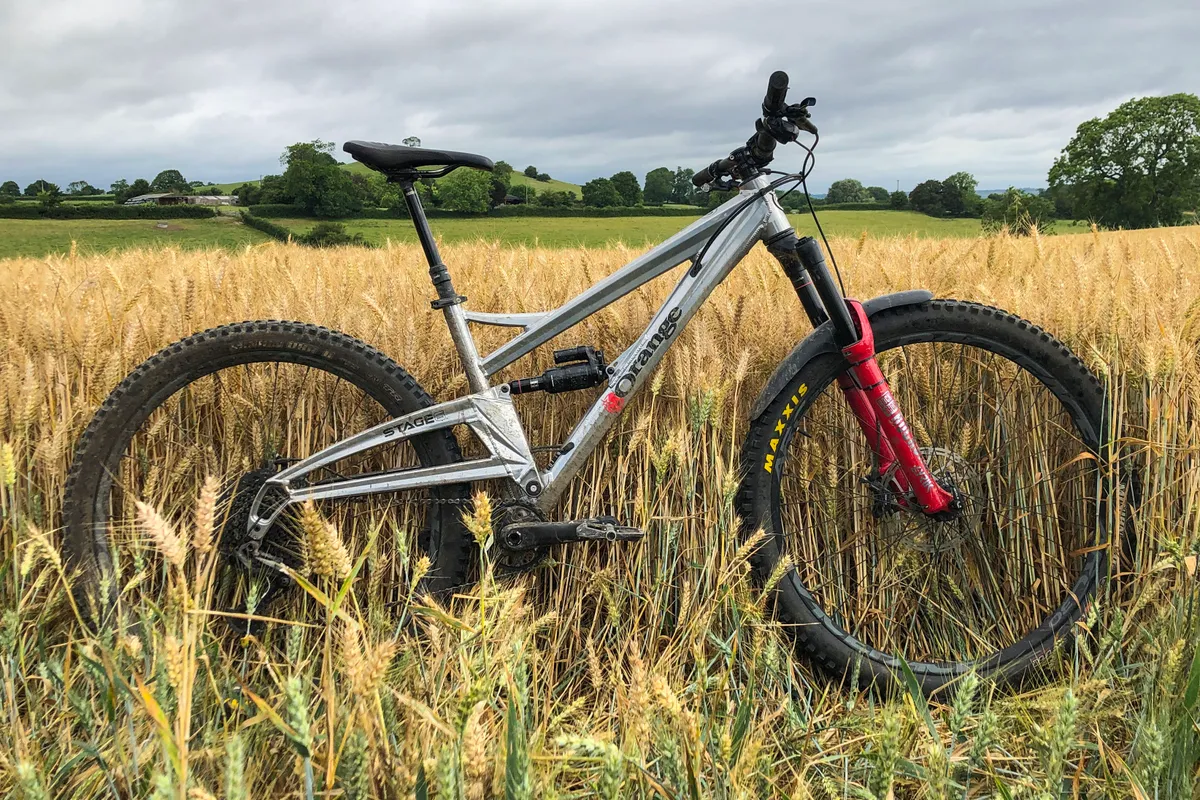
The shock’s stock compression tune certainly felt digressive — that is to say it has a very quick rise in the force it takes to compress the shock’s shaft at the start of its stroke.
This steep rise then flattens off very quickly once the shock is about a third into its travel. The compression damping still increases from here but remains fairly flat throughout the rest of the shock’s stroke.
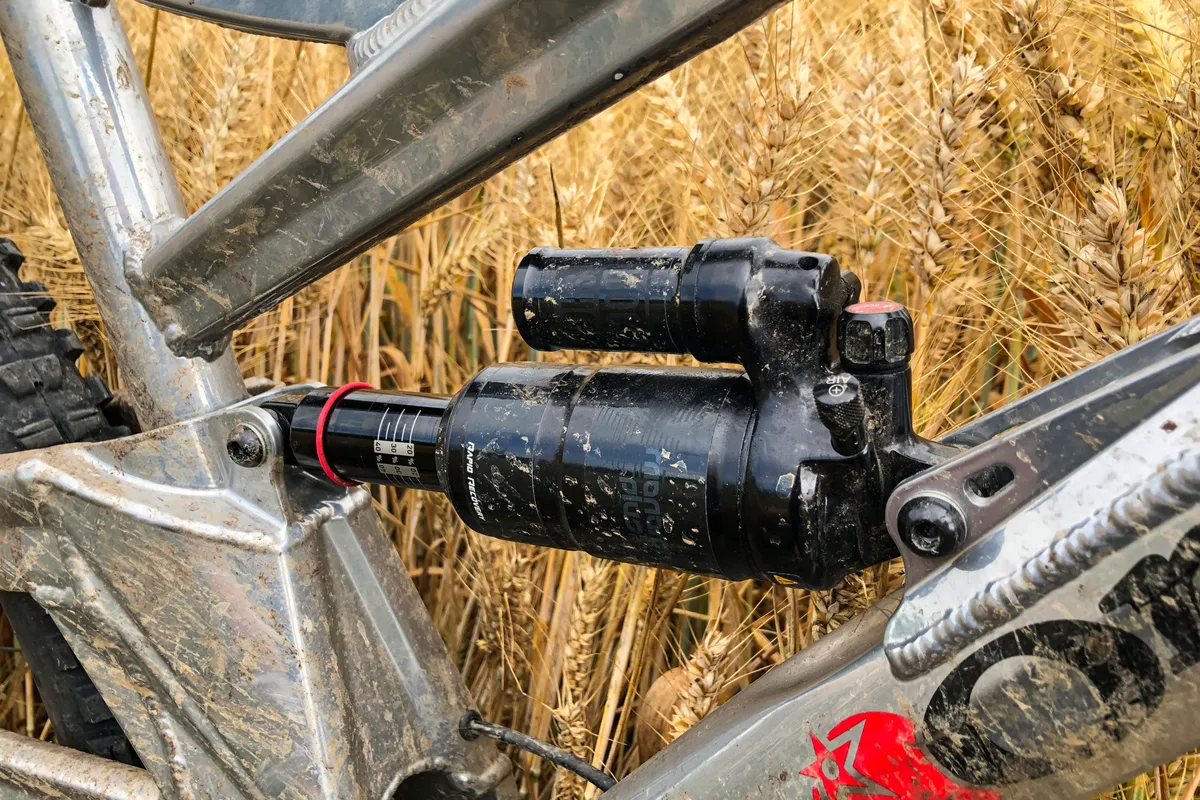
The idea behind this type of shock tune is to give the bike a supportive beginning stroke and to stop it diving into its travel. Then when you’re deeper into the bike’s suspension, provide plenty of plush cushion for bigger hits. In theory, at least.
The Orange has a virtually linear suspension kinematic. A digressive shock tune on this bike means that it’s very harsh off the top, requiring plenty of force to initiate the bike’s suspension. Then, as the bike compresses through its travel, it becomes less resistant to compression forces and blows through its suspension, bottoming out easily.
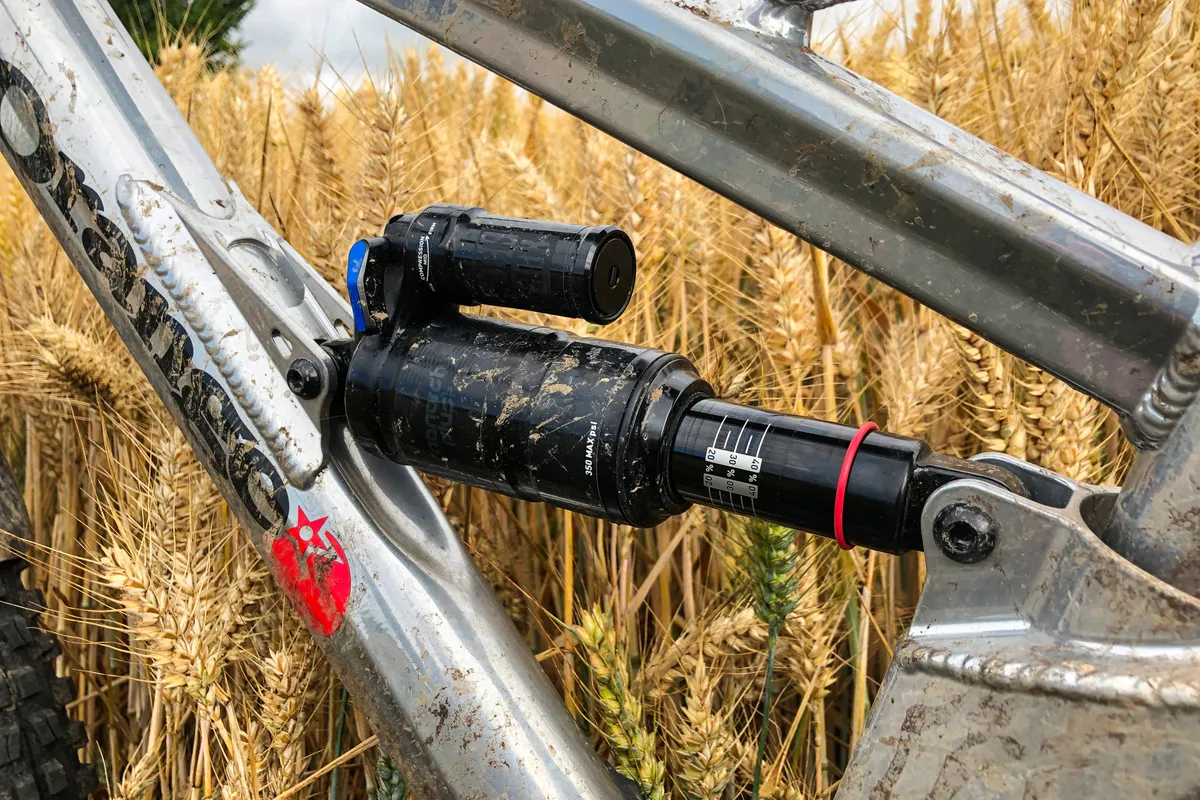
The digressive shock tune seems to go against a lot of thinking and work that brands have been doing on suspension. They’ve been trying to increase air chamber sizes to help improve sensitivity, adding bands or tokens so that air shocks have better end-stroke ramp, which allows you to run less air, resulting in a suppler beginning stroke. Quite the opposite to a digressive tune, then.
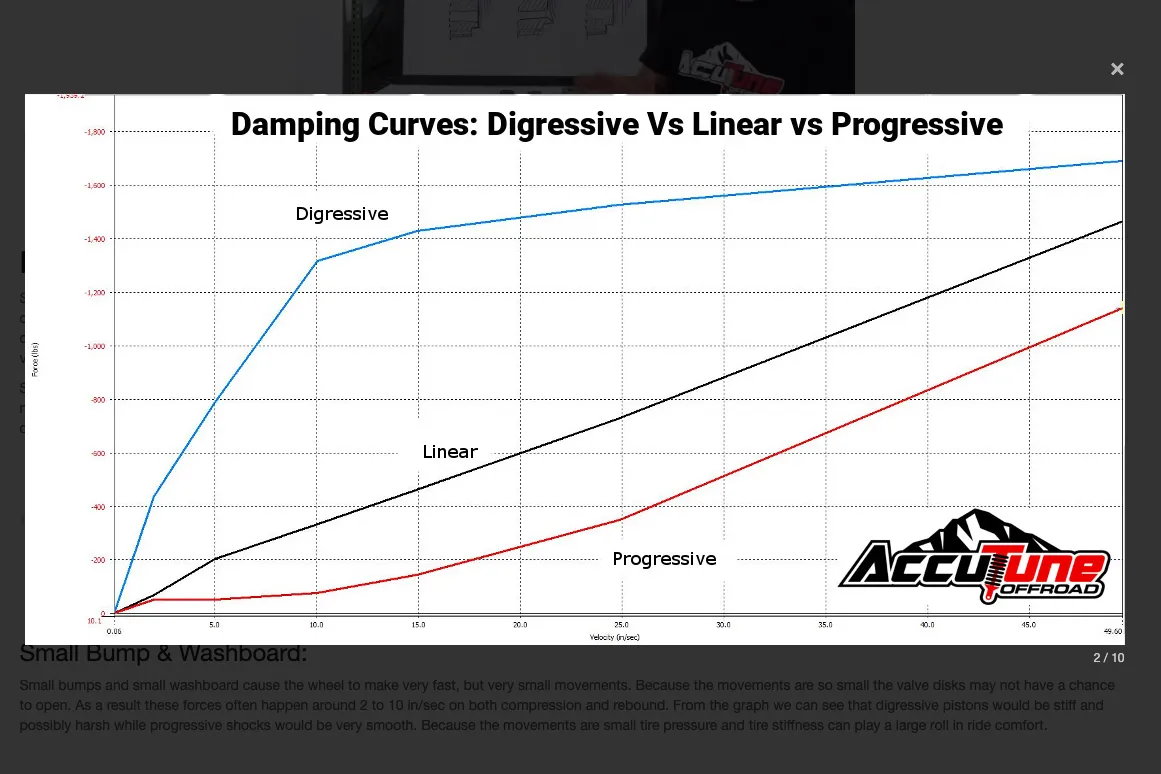
I was hopeful that Sprung would be able to work its magic on the shock, but after a gruelling week of riding in the Scottish Borders it seems that the Monarch Plus RC3 just isn’t suited to the way the Stage’s suspension works.
As I mentioned in a previous update, I didn’t struggle with these issues using a Fox Float X2 shock on the same bike, so this once again points the finger at me needing to find a different shock to use with the Stage.
Stay tuned for that one, I’ve got some ideas brewing.
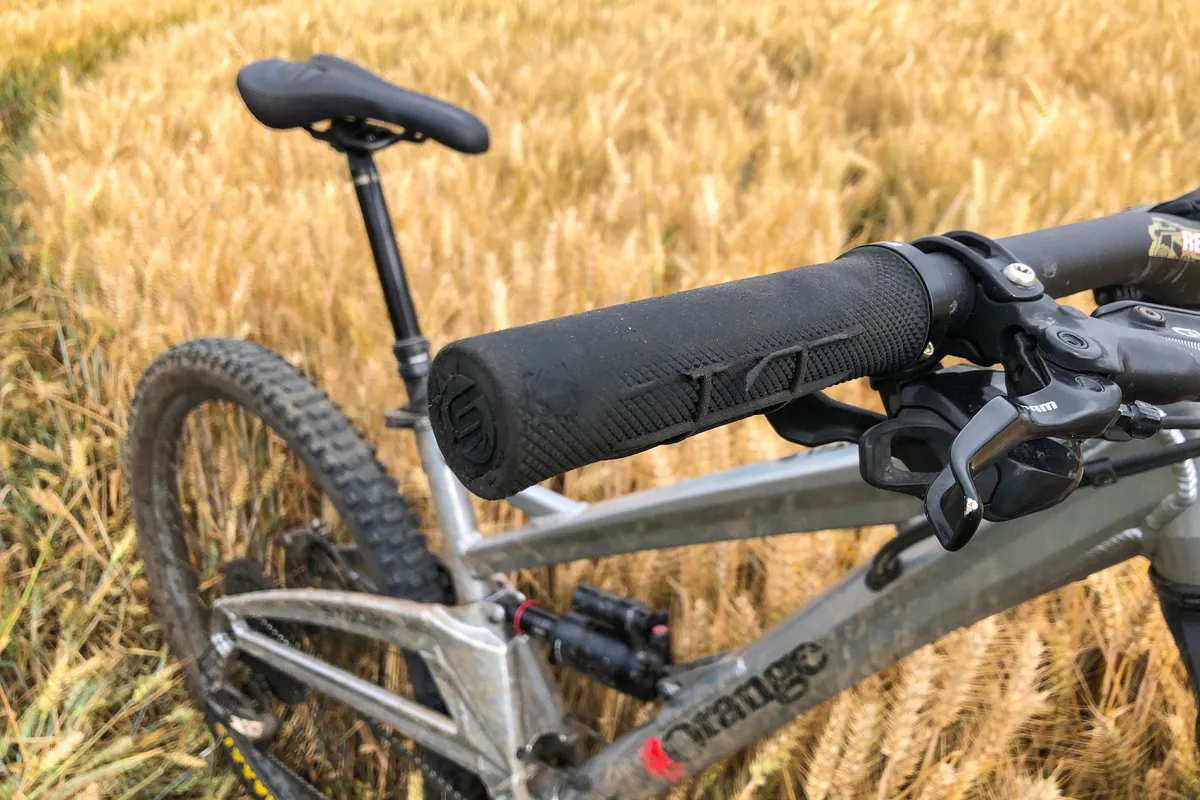
In other, more positive news, the stock Orange handlebar grips have really come into their own.
They started off being quite tough and hard but, like a fine whiskey, they’ve developed well with age, turning into a soft, hand-fitting and very comfortable set of grips.
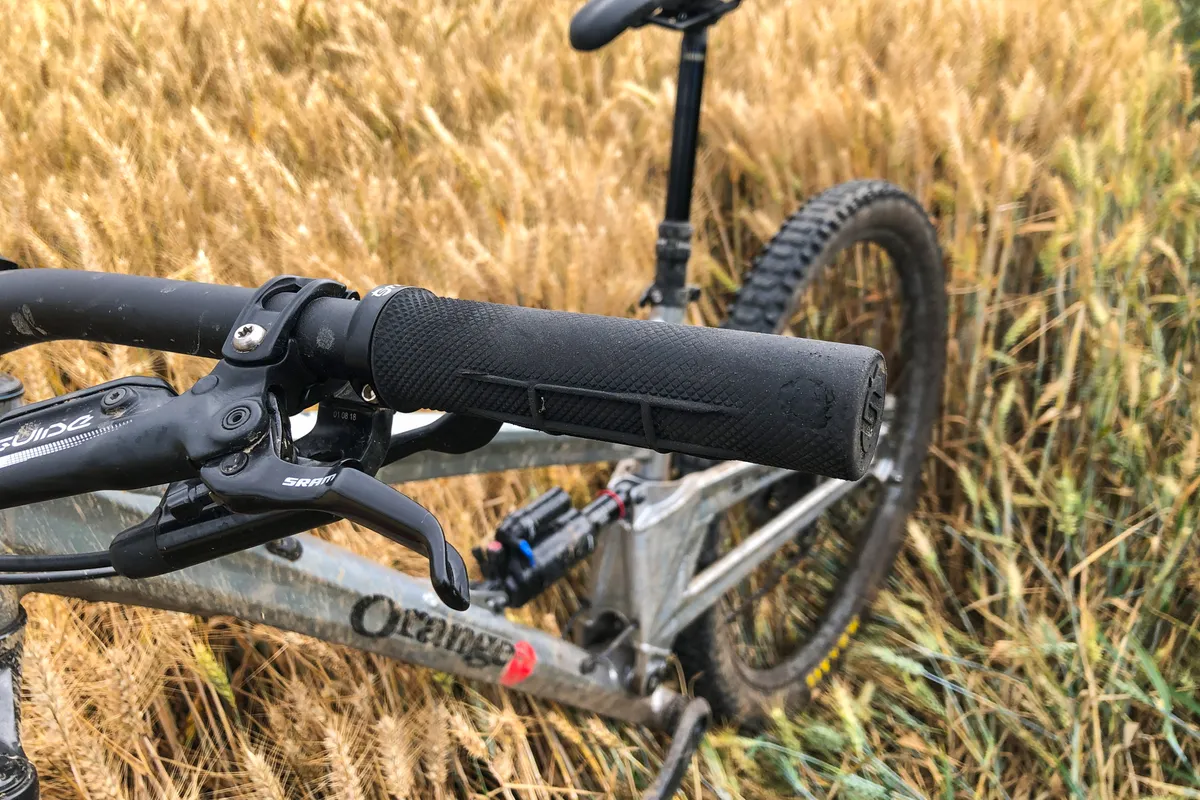
Orange Stage 6 RS long-term review update one
Since my last long-term update (scroll down to read my initial musings on life with the Orange Stage 6) not a huge amount has changed with the bike — testimony to the bike’s fantastic standard spec and quite possibly in part to my inability to be organised and get some changes sorted out.
- BikeRadar’s 2019 Bike of the Year awards
- Don’t stop where the pavement ends… Santa Cruz and Juliana launch new gravel bikes
So, what did I want to do? Well I spoke quite a bit about the rear shock not feeling as good as I'd hoped and I mentioned that I’d had better experiences with Fox’s Float X2 shock on the same bike. I suggested that maybe the bike would benefit from a lighter shock tune from the factory and with more bottom out spacers.
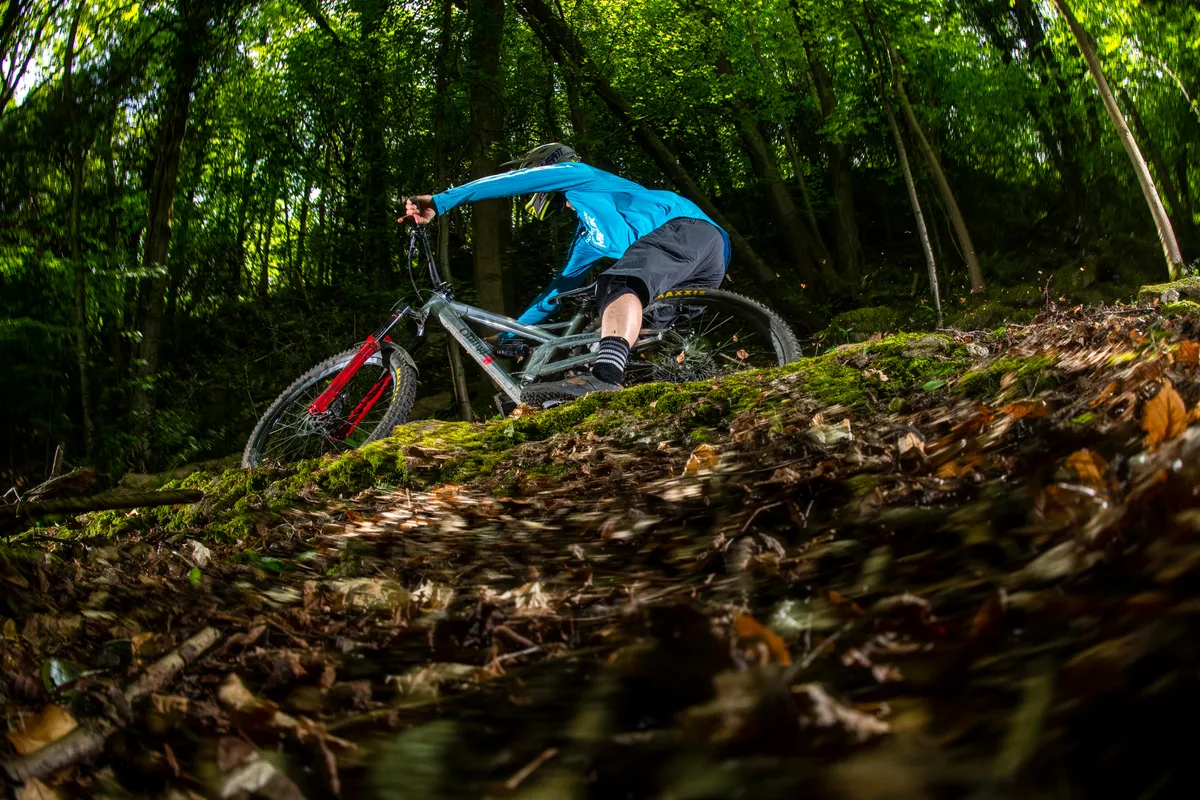
Orange got back to me saying that this is the right course of action and I’m in the process of investigating using more bottom out spacers before changing the shock’s tune — that is already very light.
Changing the shock tune could be on the cards, though, and Orange has said that I should go and visit Jake from Sprung Suspension to get the necessary work done. Hopefully I’ll have more to report on this next time.
I’m looking to get a set of Race Face Next R31 wheels to test against the alloy Arcs that are already fitted
Otherwise in the world of Orange, everything seems to be running as it should and the bike is taking any abuse I can throw its way like a champ.
The Race Face Arc 30 rims on Hope Pro 4 hubs have started to lose spoke tension every once in a while, but it doesn’t seem to be particularly problematic — the wheels are still staying true and retightening the spokes returns them to their original tension.
I also said that I was hoping to find a different set of bars, stem and some different wheels to try on the bike to see if any particular component provides a greater share of the bike’s ride feel over another. Like the rear shock, this is still work in progress but I’ve narrowed down the list of parts that I’d like to test and try out.
I’m looking to get a set of Race Face Next R31 wheels to test against the alloy Arcs that are already fitted. This should give me a relatively close level of comparison — they’re made by the same company and have a very close internal width measurement.
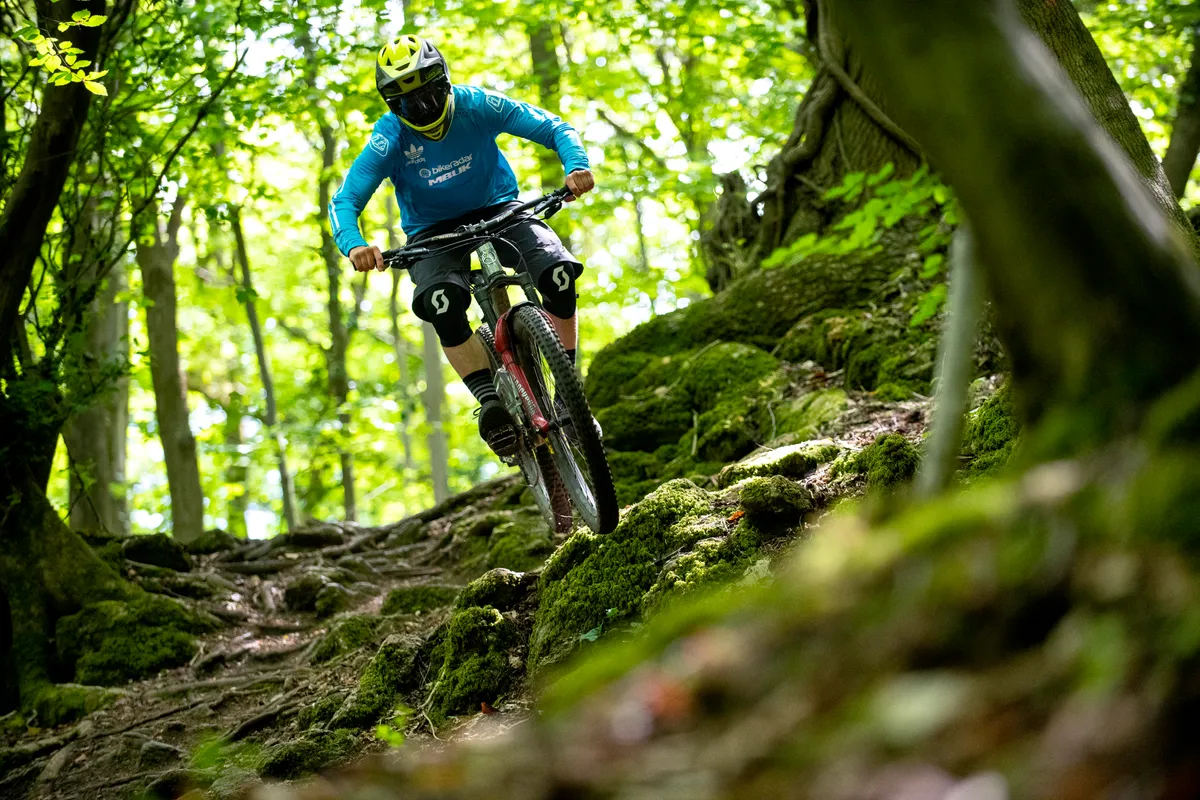
I’m also looking to change out the alloy Renthal Fatbar with the carbon fibre equivalent: the Fatbar Carbon with a 35mm clamp. I’m also hoping to change the Hope 35mm stem to a 40mm Renthal Apex number to see if this makes any difference.
Original post (15 May 2019)
The Stage 6 is Orange’s biggest, gnarliest and burliest single crown 29er. First released in 2017, it represented a response to riders wanting to take 29er bikes to new limits.
And the bike was well received, retaining Orange’s lively, poppy and engaging ride feel that is truly engrained in the company’s no fuss ethos, while providing a stable platform for those who want to get gnarly.
The Stage 6 is about enduro as it gets, designed specifically for riding and racing as quickly as possible over the hardest gravity-focussed trails you can imagine.
Orange says this is thanks to excellent lateral stiffness, low standover heights and the single pivot suspension system that Orange claims is virtually trouble-free.
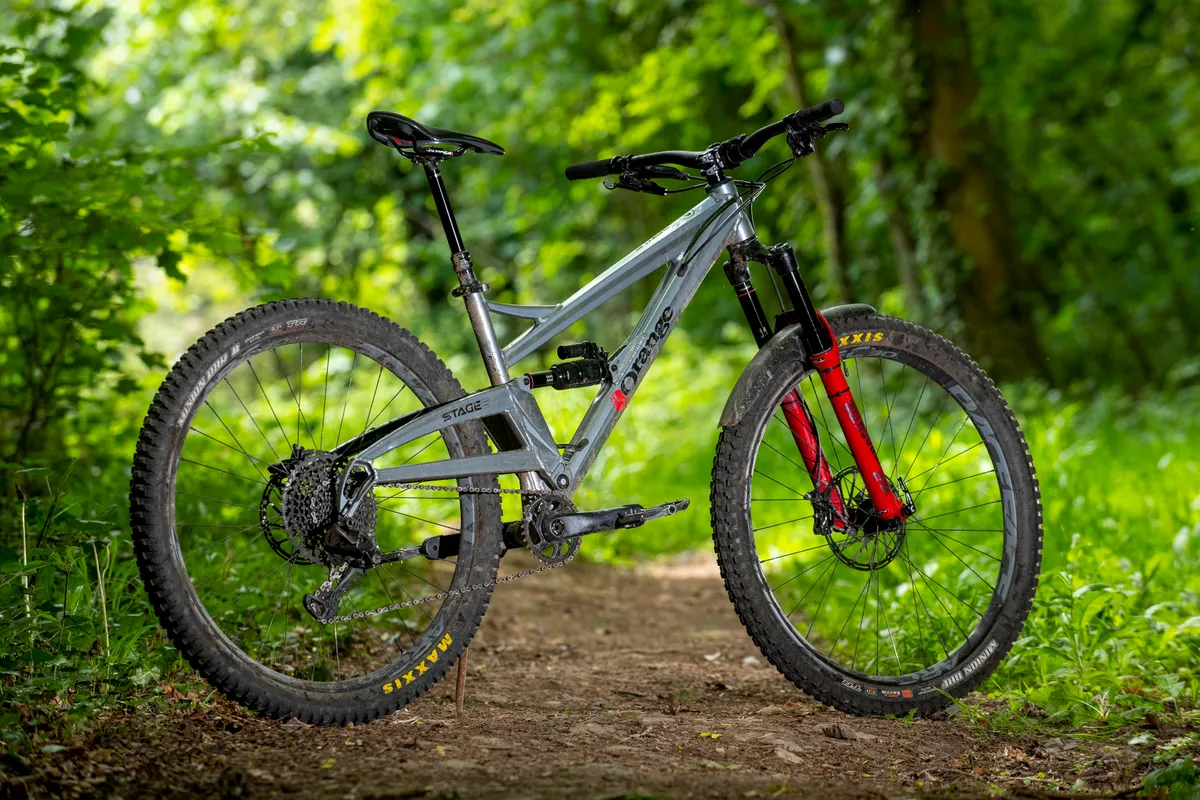
To top it off, it’s got a five-year warranty. The bike isn’t for the faint of heart though, and even Orange says it best suits skilled and confident riding.
Over the course of this year, I'm on a mission to find out whether I've got the mettle to tame the Stage 6 and get the most from it.
Orange Stage 6 RS specifications and details
Out of the box, the Stage 6 RS is a well-specced bike, but it had better be for the £4,900 asking price.
Although RS doesn’t stand for ‘RockShox’, this model is dripping in RockShox and SRAM kit.
Up front, it’s running the high-performing and award-winning RockShox Lyrik RC2 with 160mm of travel that’s paired with a RockShox Monarch Plus RC3 rear shock.
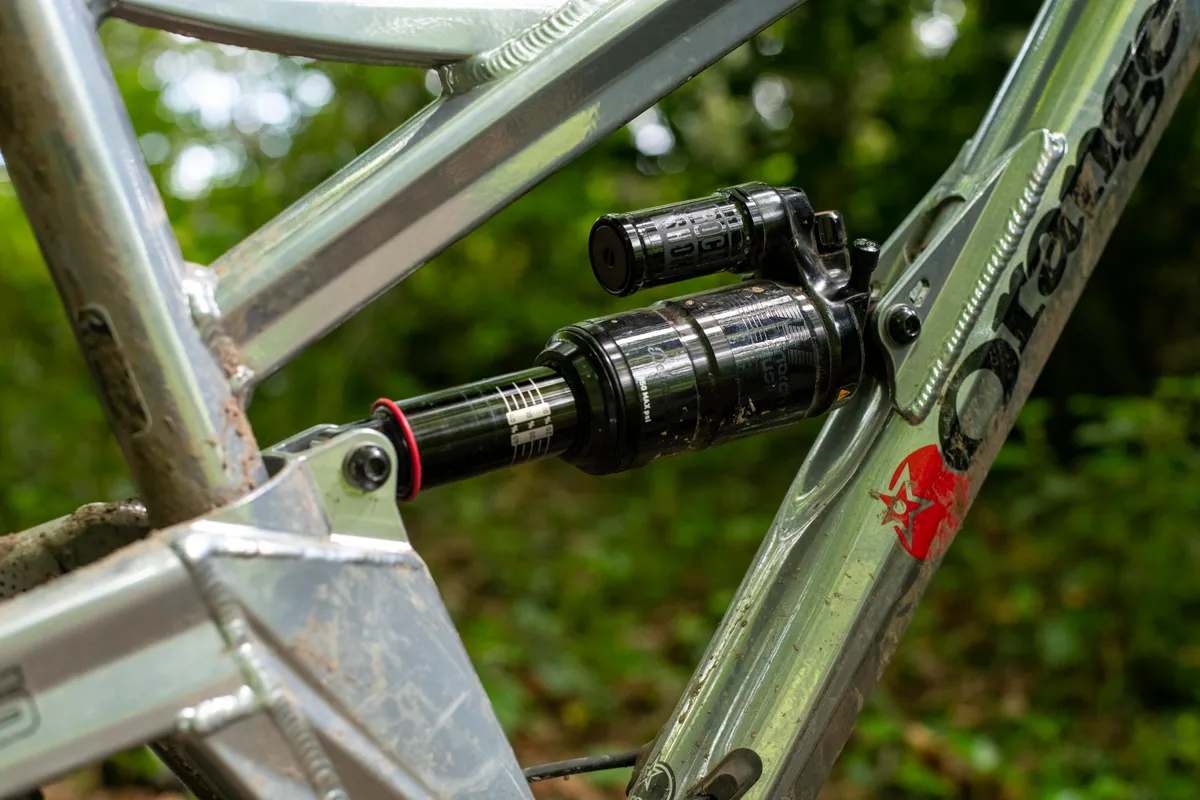
While the fork has both high- and low-speed compression damping and low-speed rebound adjustment, the shock only has low-speed rebound and a three-position compression lever with open, trail and climb modes.
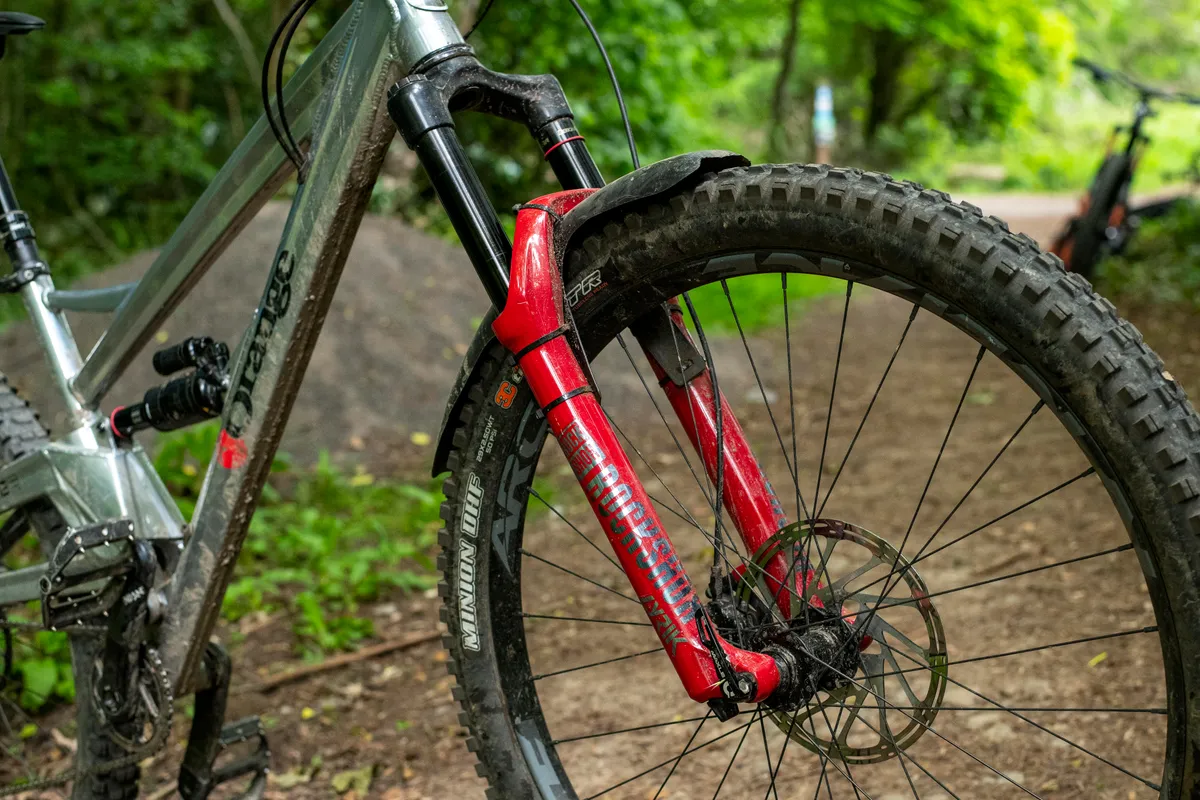
It’s running SRAM Guide RE brakes that use the trail-focused Guide lever body matched with the top-of-the-line Code DH-biased caliper. These brakes have a reputation for being a bit of a winning combination.
There’s a mix and match of SRAM Eagle drivetrain parts, too. The X01 Eagle mech is paired with a GX Eagle shifter and Descendant cranks, and the 10/50-tooth cassette is combined with a 32-tooth chainring.
The finishing kit has a mix of top parts from Renthal, Hope, SDG and Race Face. The 800mm-wide FatBars use a 35mm clamp and SDG’s Radar saddle has Orange branding on it.
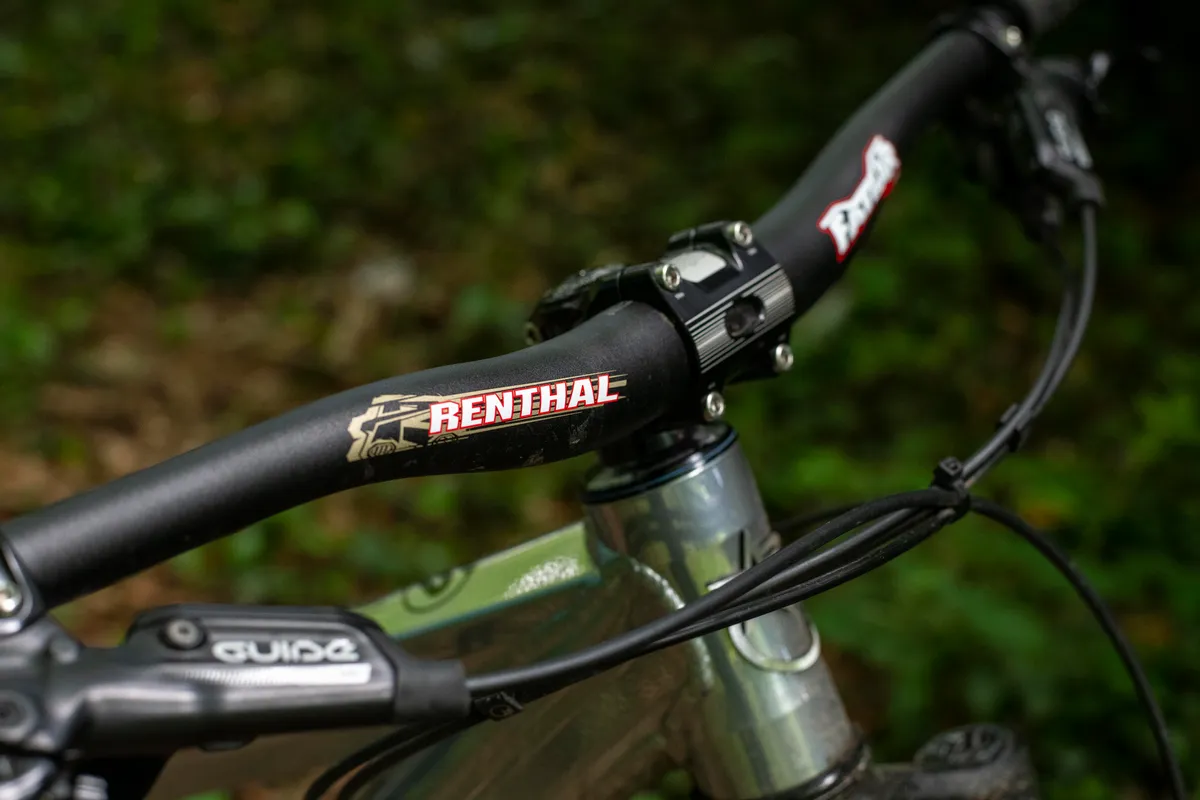
The ARC 30 Race Face wheels are made from aluminium and are laced to Boost 148x12mm rear and Boost 115x15mm front spacing Hope Pro 4 hubs. The wheels are clad in Maxxis Minion DHF and DHR II wide trail rubber.
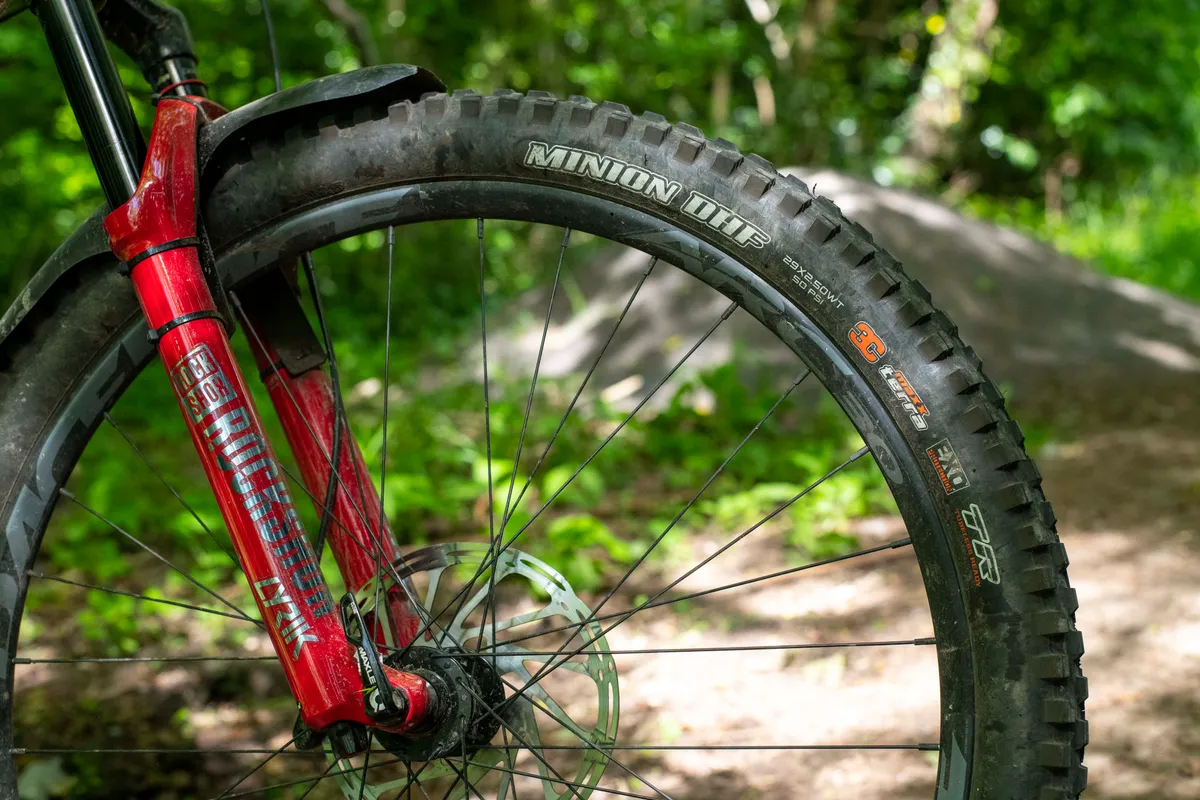
To top it off, there’s an internally routed 150mm-travel RockShox Reverb dropper post.
Orange Stage 6 RS full specification
- Sizes (*tested): M, L*, XL
- Weight: 14.49kg (31.96lb), size L without pedals
- Frame: 6061 T6 monocoque aluminium, 150mm/5.9in travel
- Fork: RockShox Lyrik RC2, 160mm/6.29in travel
- Shifters: SRAM GX Eagle
- Derailleurs: SRAM X01 Eagle
- Cranks: SRAM Descendant carbon cranks (1×12)
- Wheelset: Race Face Arc 30 on Hope Pro 4 hubs
- Tyres: Maxxis Minion DHF 2.5 WT 29xx2.5in (f) and Maxxis Minion DHRII 2.4 WT 29x2.4in (r)
- Brakes: SRAM Guide RE 200/180mm rotors
- Bar: Renthal Fatbar M35, 800mm
- Stem: Hope, 35mm
- Seatpost: RockShox Reverb 150mm dropper
- Saddle: SDG Radar
Orange Stage 6 RS geometry

The Orange’s geometry is relatively modern, but it would be fair to say that it isn’t groundbreaking. My size large has a 65.5-degree head angle and a 450mm chainstay length that’s mated to a 1,245mm wheelbase.
The reach is 462mm, making it bang on the money for a size large bike. The effective seat tube angle is 74.5 degrees.
- Head angle: 65.5 degrees
- Seat angle: 74.5 degrees
- Chainstay: 450mm / 17.71in
- Seat tube: 457cm / 18in
- Top tube: 613mm / 24.13in
- Head tube: 110mm / 4.33in
- Bottom bracket drop: 35mm / 1.37in
- Wheelbase: 1,245mm / 49.01in
- Stack: 643mm / 25.31in
- Reach: 462cm / 18.18in
Why did I choose this bike?
As someone that used to race and ride downhill, it kind of goes without saying that most of my rides are gravity orientated. I’ll find the most efficient way to the top of the mountain, using as little energy as possible so that I can enjoy the descents the most. This narrowed my choice down to enduro-focussed bikes. I also dislike spending more time than necessary maintaining bikes, and although I’m not too bad at fixing things when they go wrong, I’d rather just spend my time riding. That focused my choice down further, highlighting that I needed a bike with as few moving parts as possible.
I also thought it would be good to go for a bike that’s built in my home country, the UK, and something that I knew suited the way I ride (I didn’t want to be committing to an unknown quantity for a year of riding).
Enter the Orange Stage 6 RS that's handbuilt in Halifax, UK. It was an obvious choice for me.
Orange Stage 6 RS initial setup
I found the beauty of the Orange was how easy it was to set up. The suspension has a fairly predictable leverage rate — that neither drops off nor rises aggressively — and its axle path is relatively vertical.
Luckily, I’ve already ridden several sets of RockShox Lyrik RC2 forks so I was able to quickly dial in my preferred settings. I fitted two tokens and put 95psi in the air spring. I adjusted the rebound to my preferences and put three clicks on of low-speed compression from open.
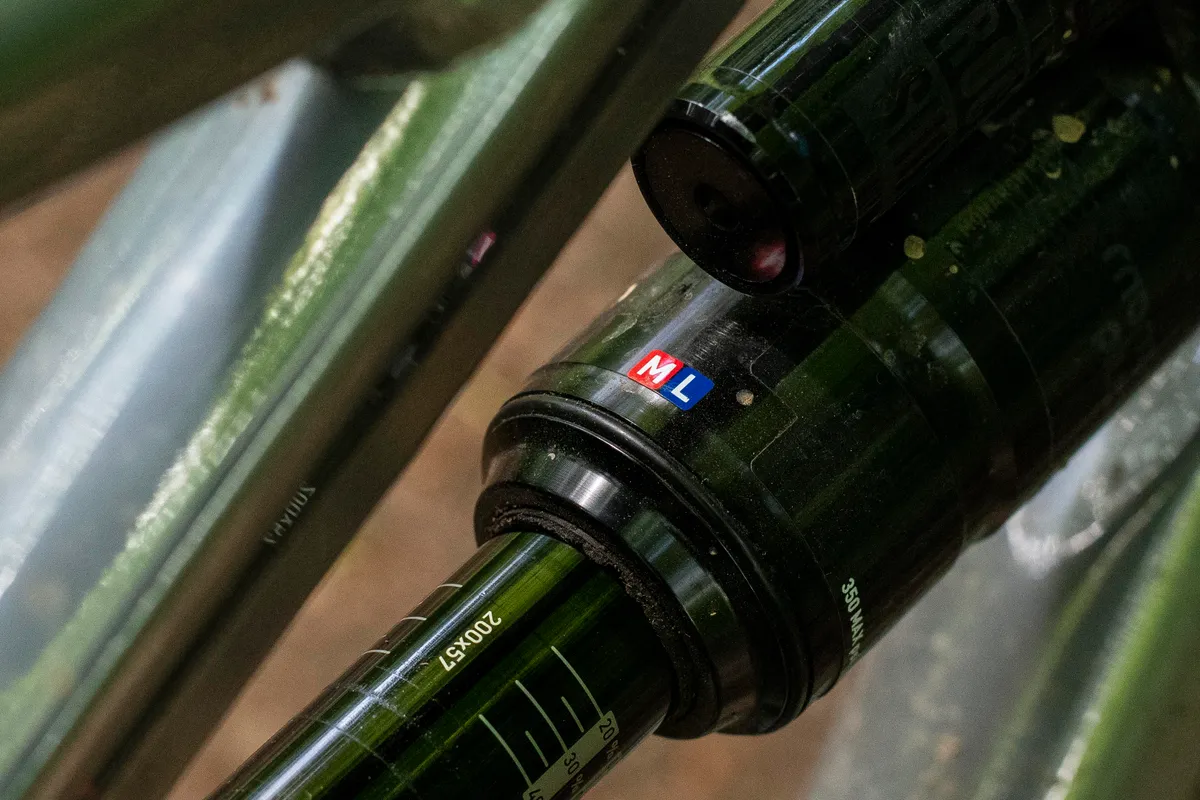
I set the rear shock up with no tokens and 195psi, once again setting the rebound to my preferences.
I left the 800mm-wide bars uncut and pumped the tyres up to 28psi in the front and 30psi in the back. The tubeless set-up tyres inflated without issue.
I had to angle the seat nose down and push it as far forward in the rails as possible to help overcome the relatively slack seat tube angle, which has a tendency to make uphill progress less comfortable.
It was relatively difficult to get the SRAM Guide RE brakes set up correctly, though. Out of the box they had lazy pistons that needed freeing up.

By clamping the moving pistons and forcing the lazy ones to move it was possible to get the brake's pistons to centralise over the discs.
The internal cable routing means that Orange has to bleed its brakes at the factory. This process did lead to the bike’s rear brake feeling particularly spongy, requiring a re-bleed right away.
Orange Stage 6 RS ride impressions so far
For me, jumping on an Orange is like meeting up with an old friend. The bike’s inherently predictable feel has made it a bit of a benchmark from which I compare other bikes.
One of these predictable and resoundingly Orange traits is its snappiness. It’s instantly noticeable when pedalling or descending, but that same characteristic comes from different parts of the bike depending on whether you're fighting or working with gravity.
When you’re climbing, the bike’s anti-squat helps to propel it forward. Sitting at around 133 percent at sag in first gear, it’ll keep the bike sitting up in its travel rather than compressing with each pedal stroke.
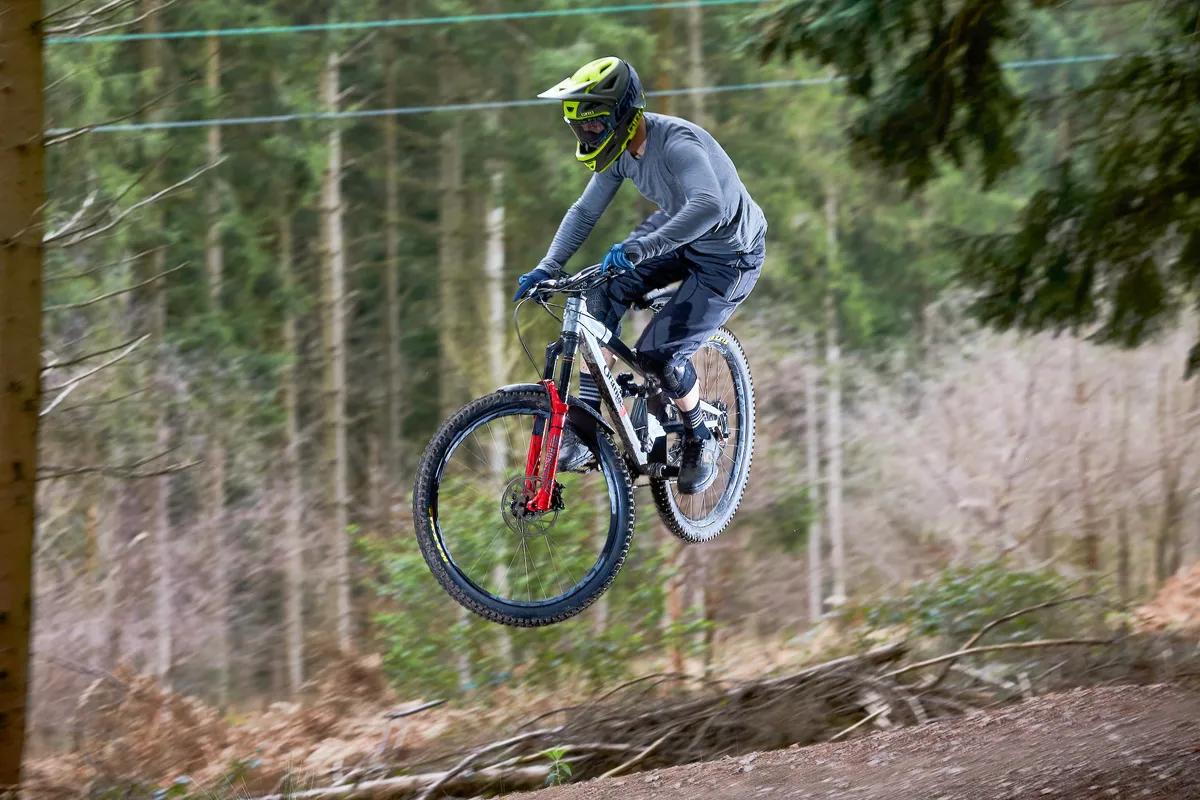
The bike has a penchant to move forwards efficiently when you’re putting power through the pedals. And, because the suspension isn’t especially active under power, it doesn’t feel like the bike bogs down when you hit bumps.
Instead, it makes a dull thud as the back wheel strikes bumps and then duly lifts up and over the obstacle without a huge amount of fuss. When you’re pinning it, this translates to a rather snappy-feeling bike that’s eager to move.
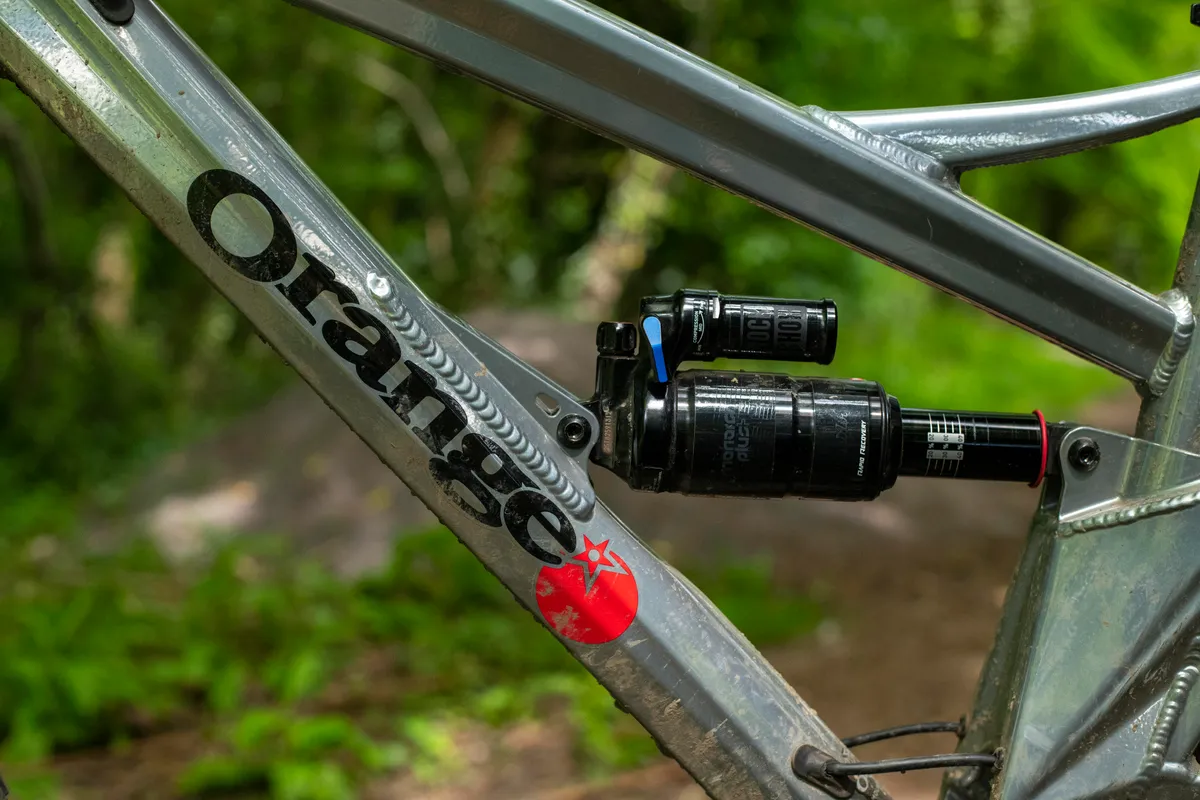
Point the bike downhill and that peppy and poppy ride is still there. While this is in part down to the bike’s suspension having good levels of support (thanks to the anti-squat), the frame’s aluminium construction and single pivot layout makes it feel like you’re riding a taut rubber band that you can flick and flex around turns and through holes.
And that feeling is exceptionally rewarding, especially when you’re working the bike hard, pushing it through, over and on the terrain you’re riding.
The bike builds speed with rider input and it doesn’t feel like there’s a significant amount of energy wasted when giving it the beans.
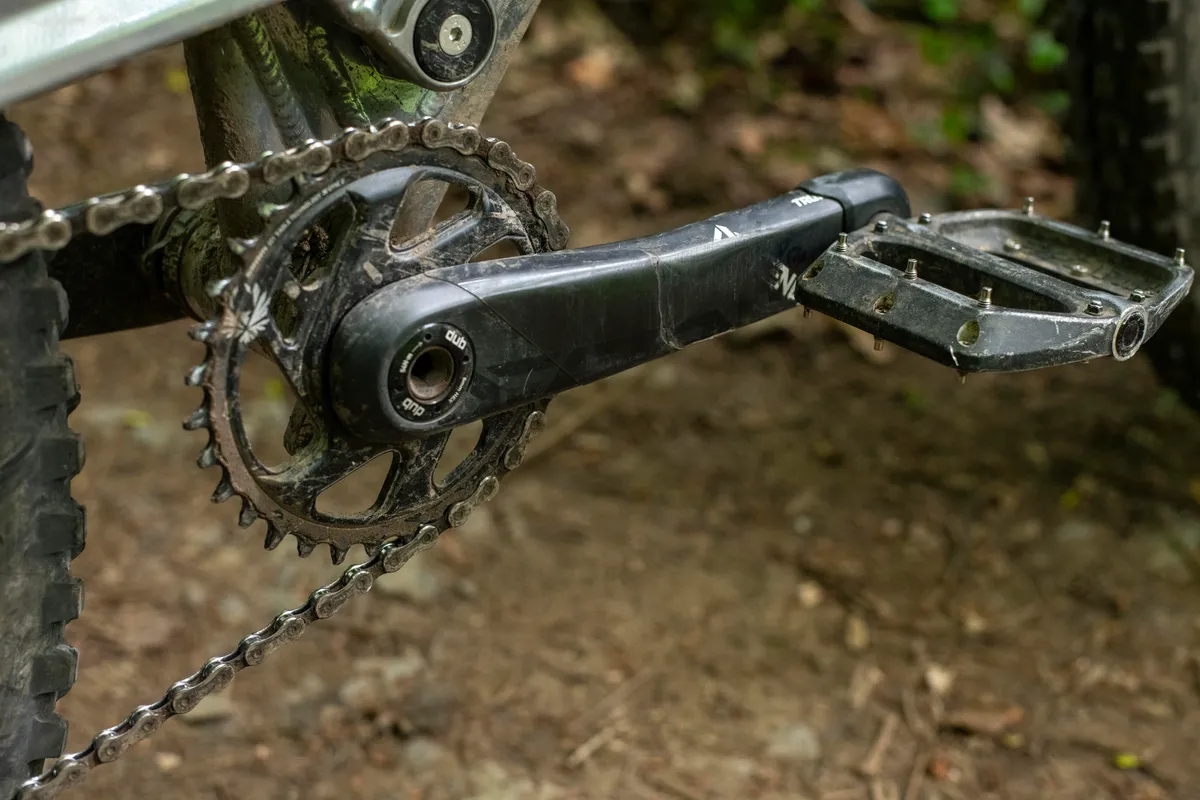
The characteristics that give you those same feelings descending and climbing are a double-edged sword, though.
Fall asleep behind the bars or become disengaged from the trail and the bike will punish you, kicking you up the arse without an apology at the first opportunity it gets. So Orange’s warning should be well heeded.
The RS bike’s spec is right up there, but the longer I spend on the bike the more it feels like it isn’t suited to RockShox’s Monarch Plus RC3 rear shock, or at least the stock tune that the bike is delivered with.
There’s a lack of beginning stoke sensitivity which is coupled with not very much end-stroke ramp up. This is thanks to the inherently linear suspension kinematic that’s normally easy to modify with shock bottom-out spacers and tunes.

However, the Monarch doesn’t do a very good job of this, and I would suggest that it needs to have a lighter tune with more bottom out spacers from the factory. This is something I’m going to investigate in due course.
I have found the rest of the bike to perform exceptionally well, though.
Orange Stage 6 RS upgrades
Going forwards, I’m really looking forward to trying out a different shock on the bike.
I’ve ridden a Stage 6 with Fox’s Float X2 and didn’t experience the same problems I have with the Monarch, and although this is a factory upgrade option at purchase, I felt like it increased the price too much.
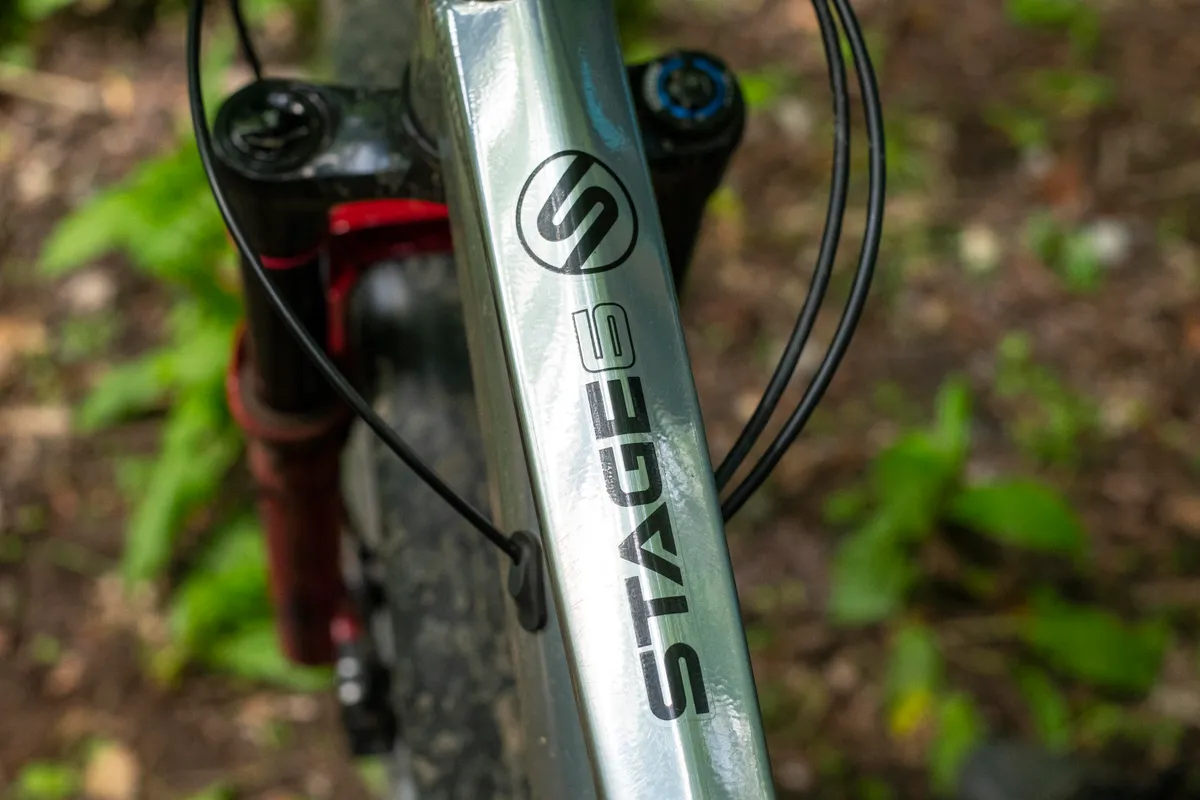
On reflection, though, this should have been at the top of the list of places where money should be spent. I’d also like to explore how much of a difference changing bars, stems and wheels (individually to each other) makes the bike feel.
So far, the frame’s been faultless and as maintenance-free as you’d hope from a bike that gets ragged and abused.
BikeRadar's 2020 long-term test bikes
At the start of the year, every member of the BikeRadar team selects a long-term test bike to ride over the course of the following 12 months. Some choose a bike from their favoured discipline and ride it hard for a year, others opt for a bike that takes them outside of their comfort zone.
Our long-term test gives us the opportunity to truly get to grips with these machines, so we can tell you how they perform through different seasons and on ever-changing terrain.
We also use them as test beds for the latest kit, chopping and changing parts to see what really makes the difference – and help you decide which upgrades are worth spending your money on.
To see all of the BikeRadar team's 2020 bikes – and stay up-to-date with the latest developments – visit our long-term review hub.
